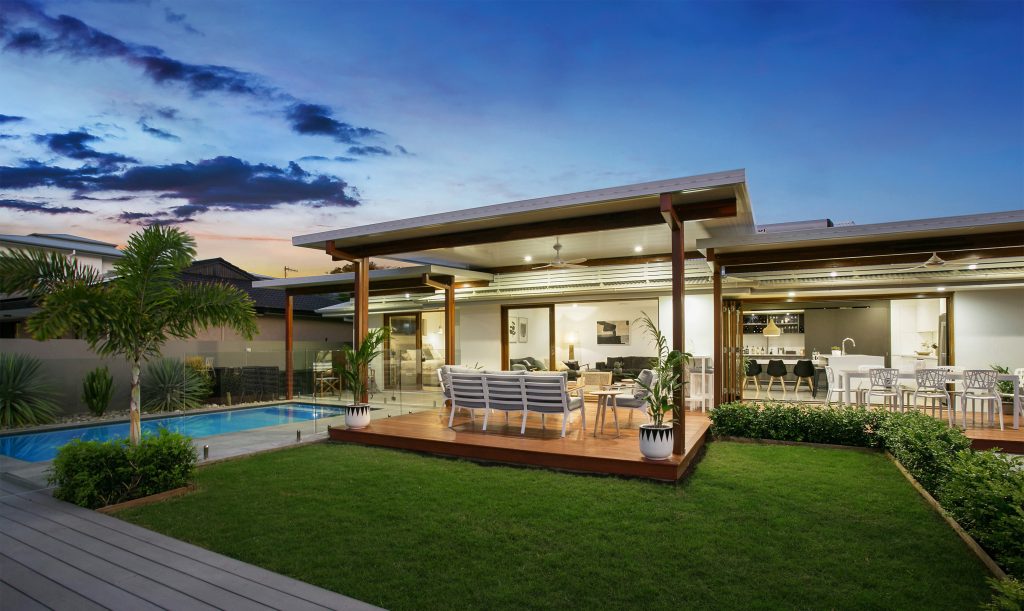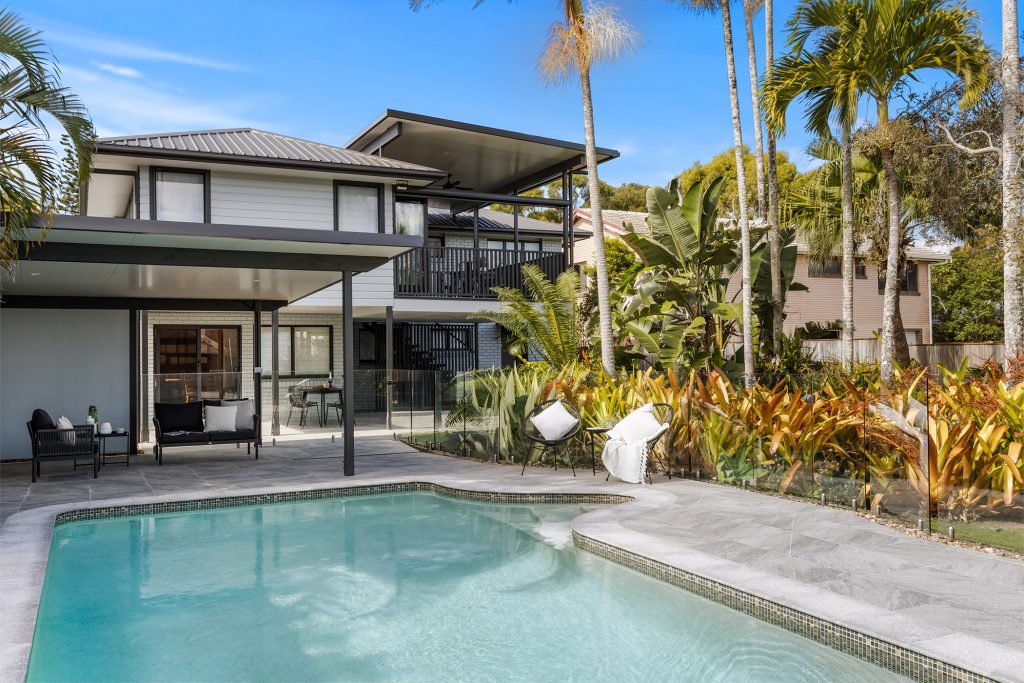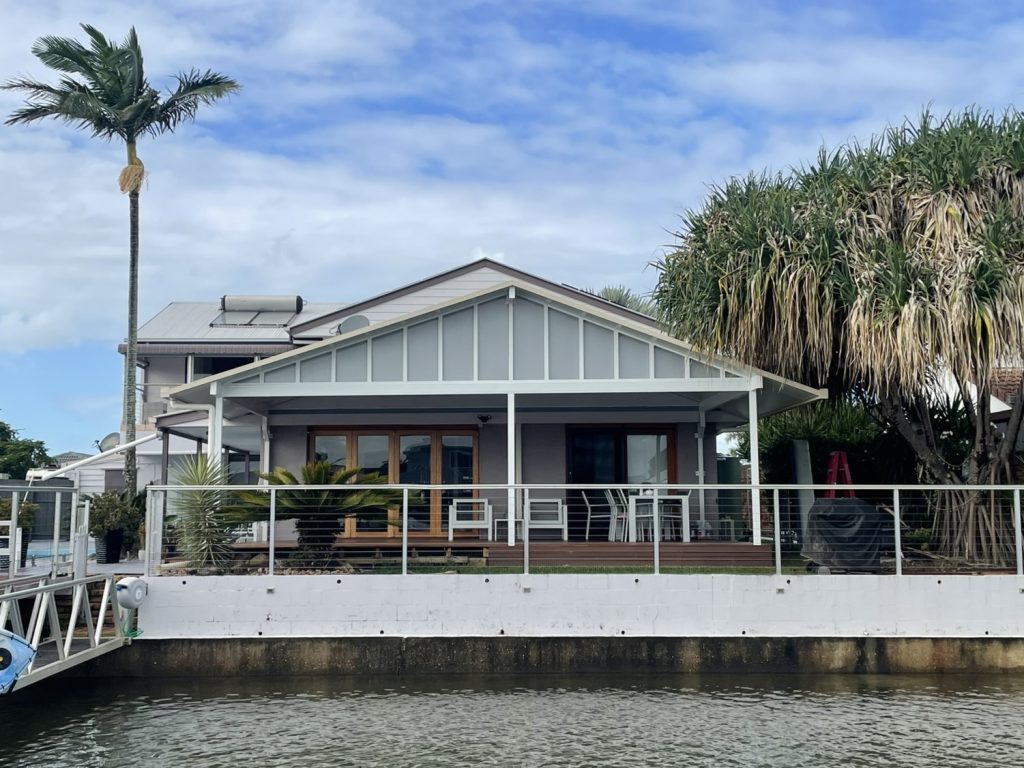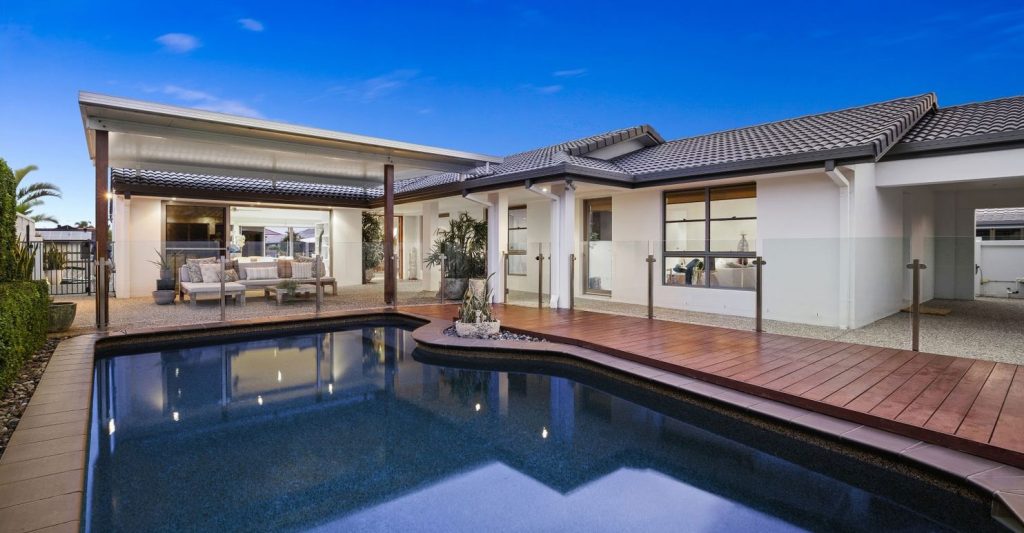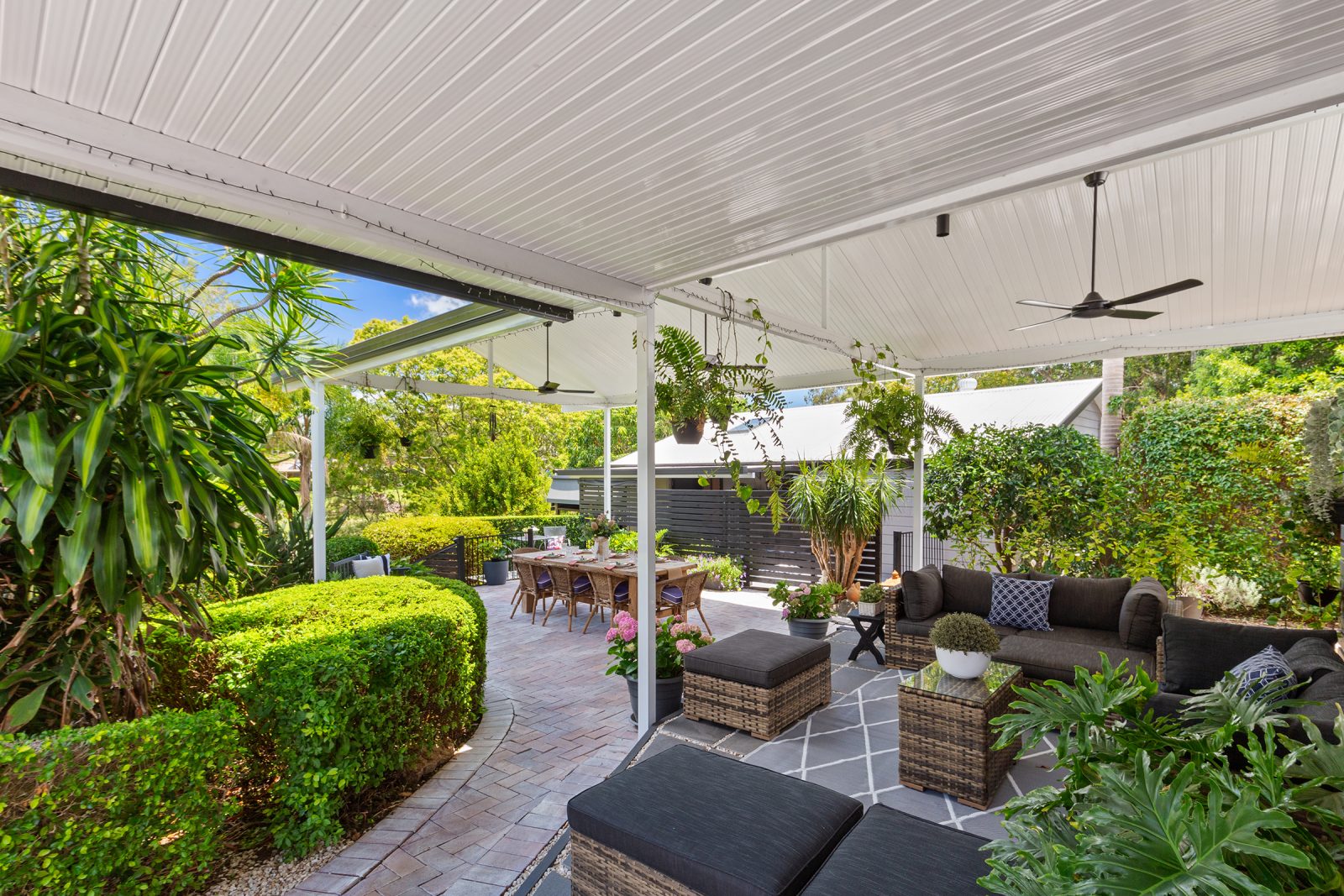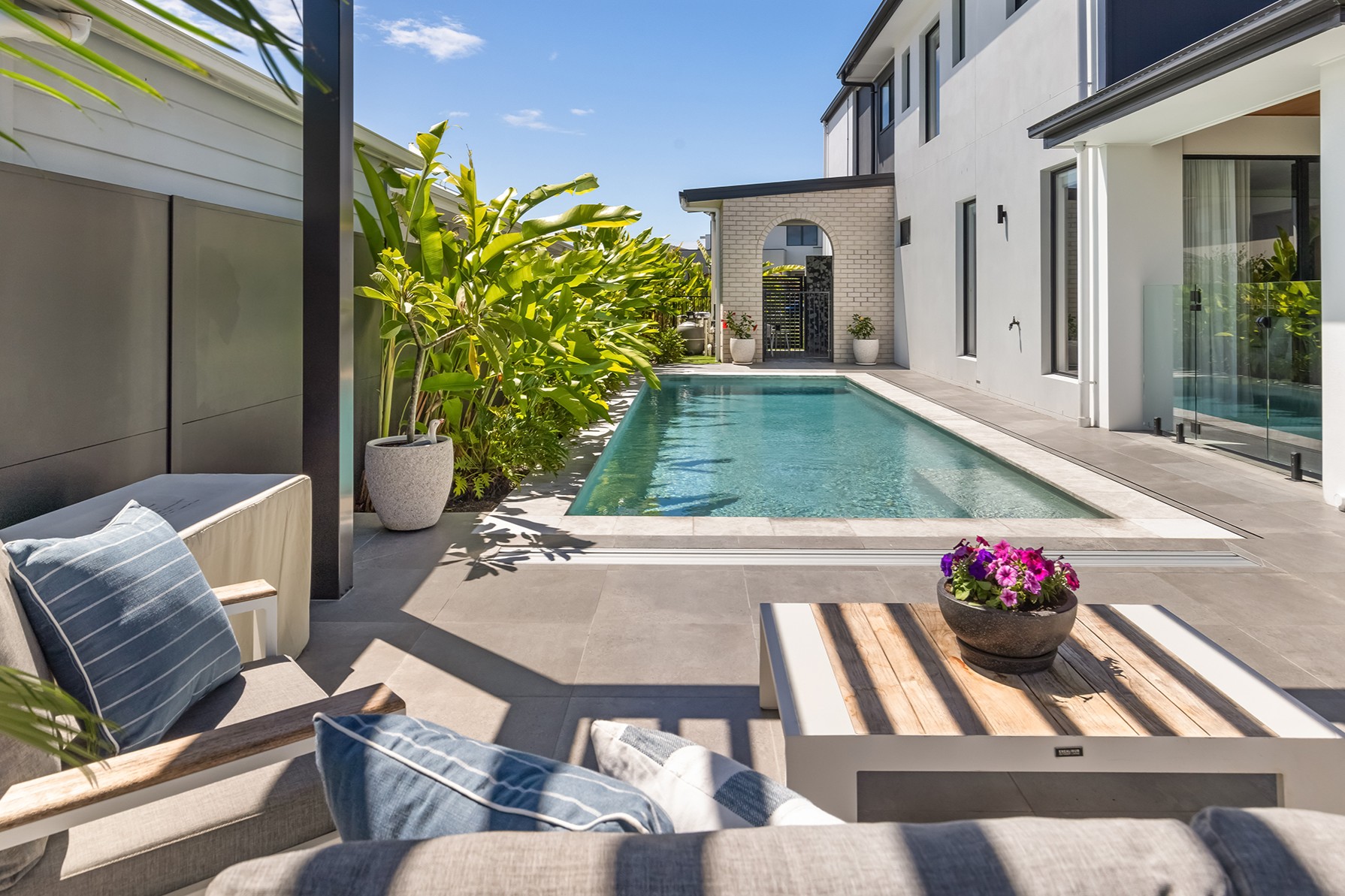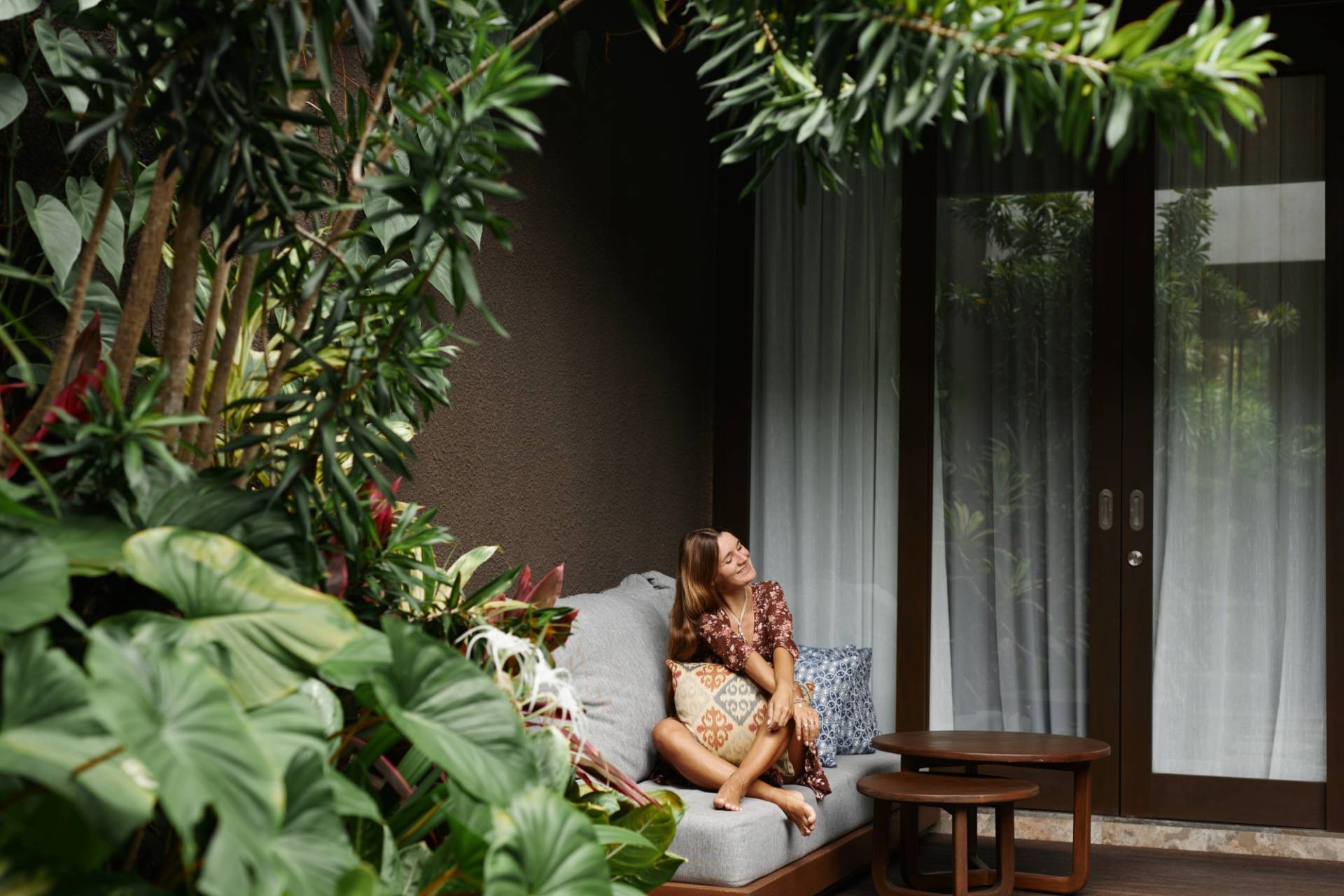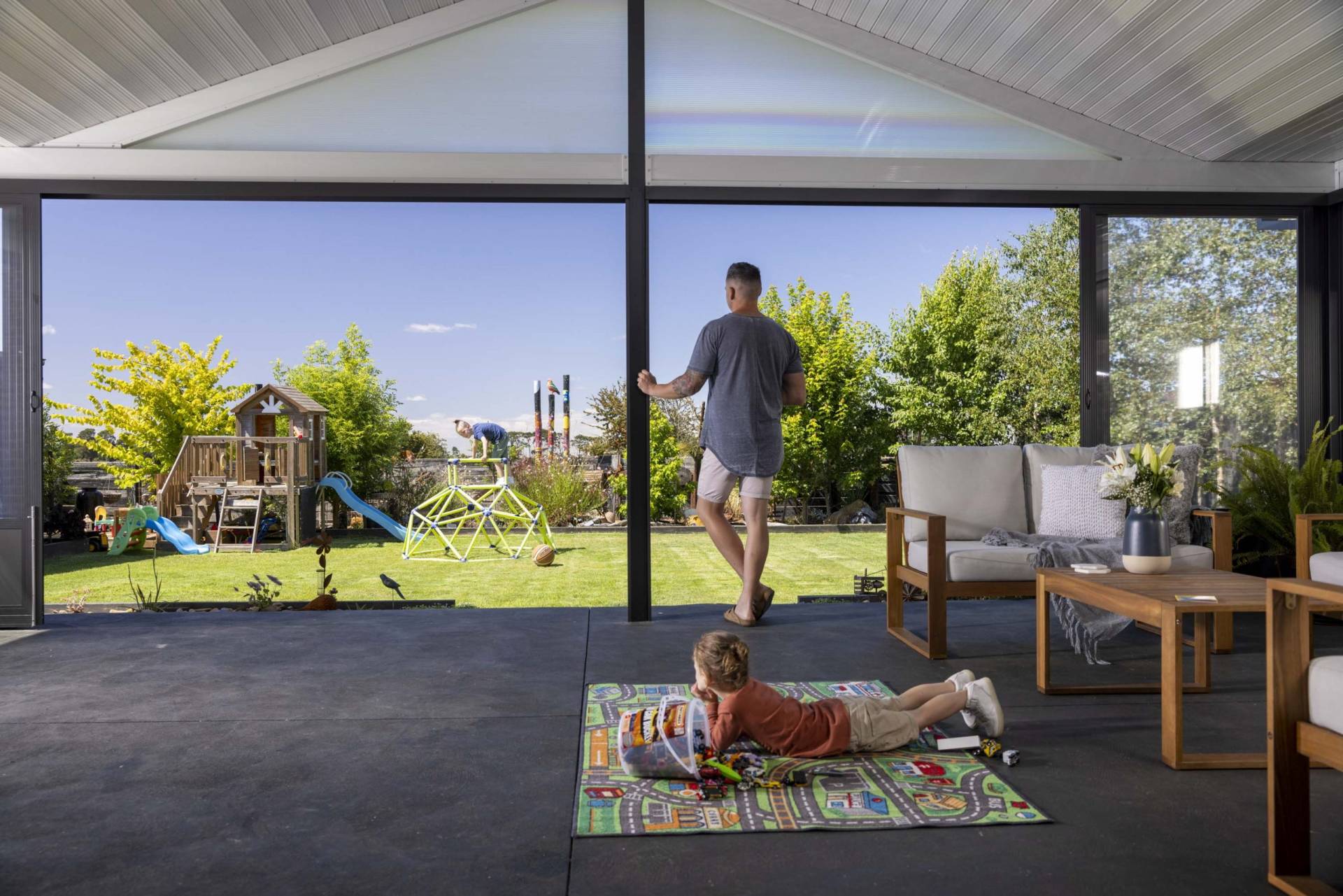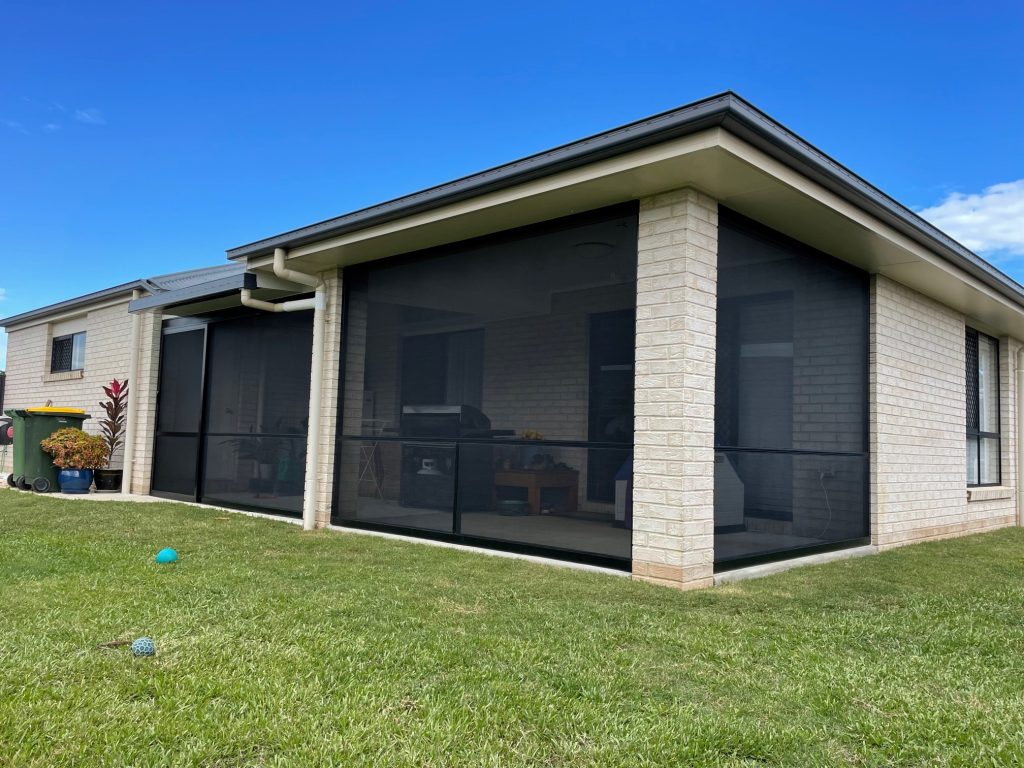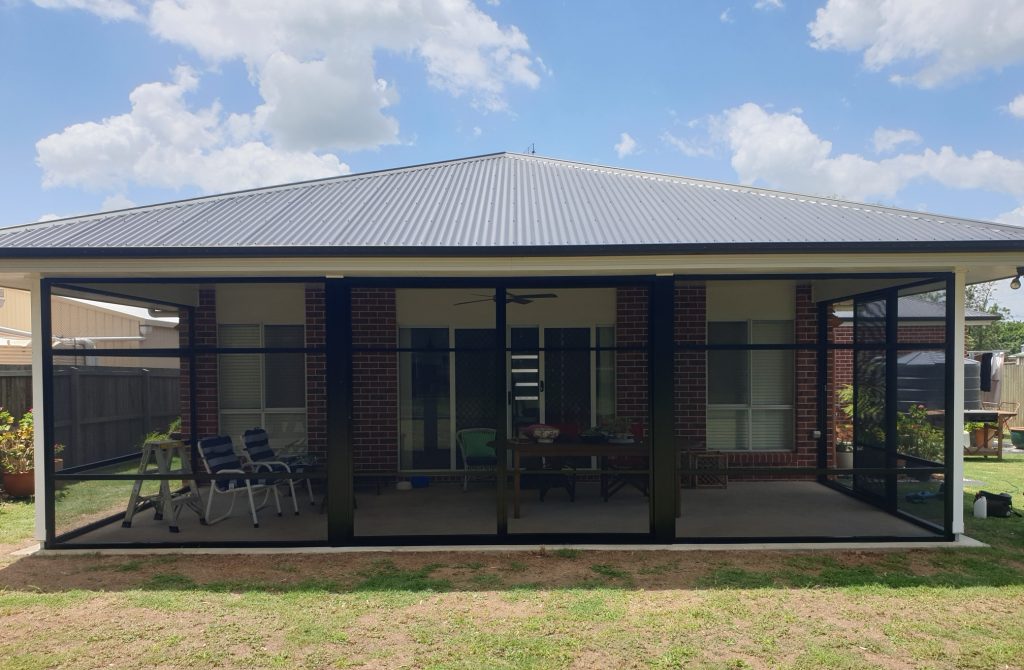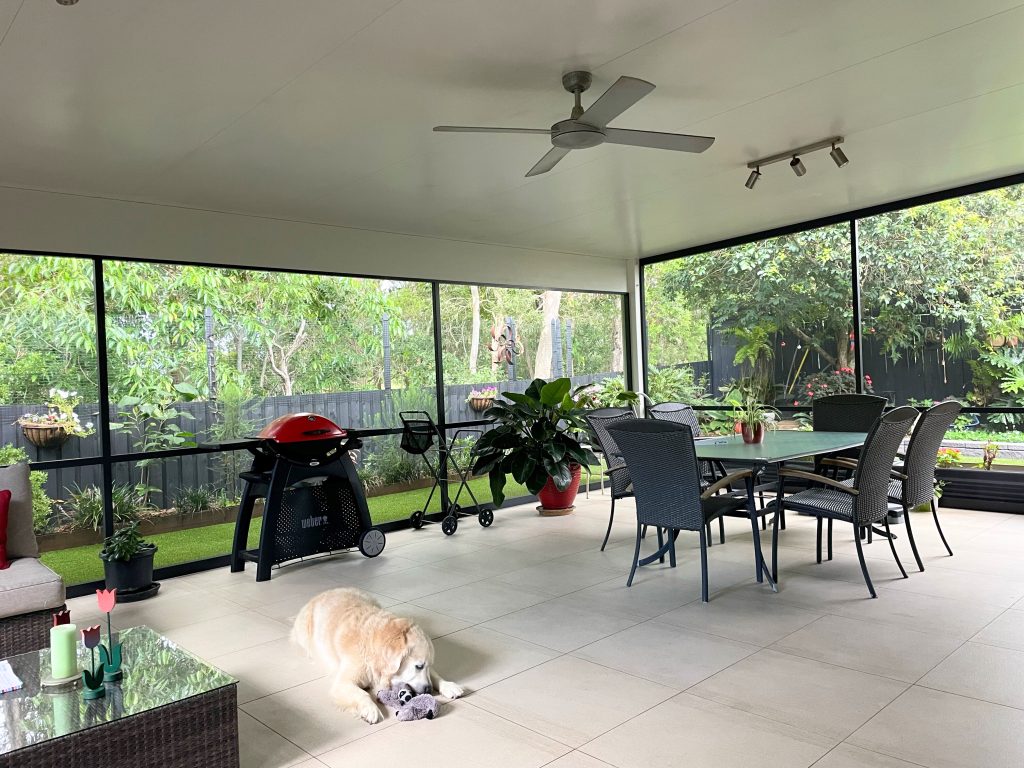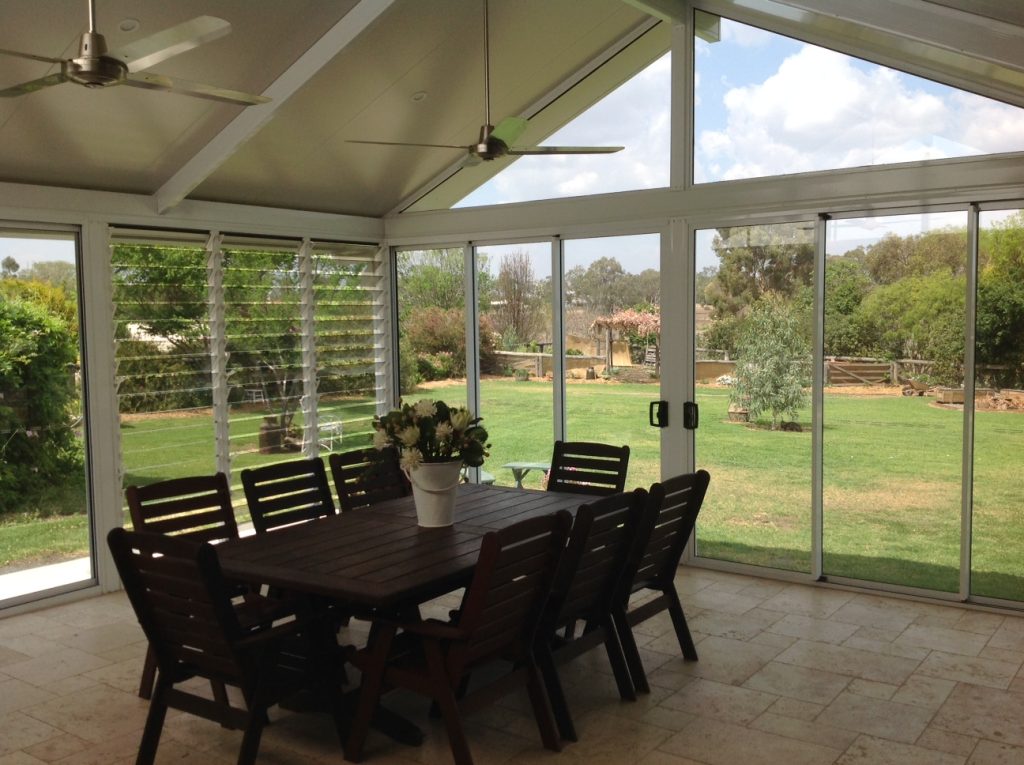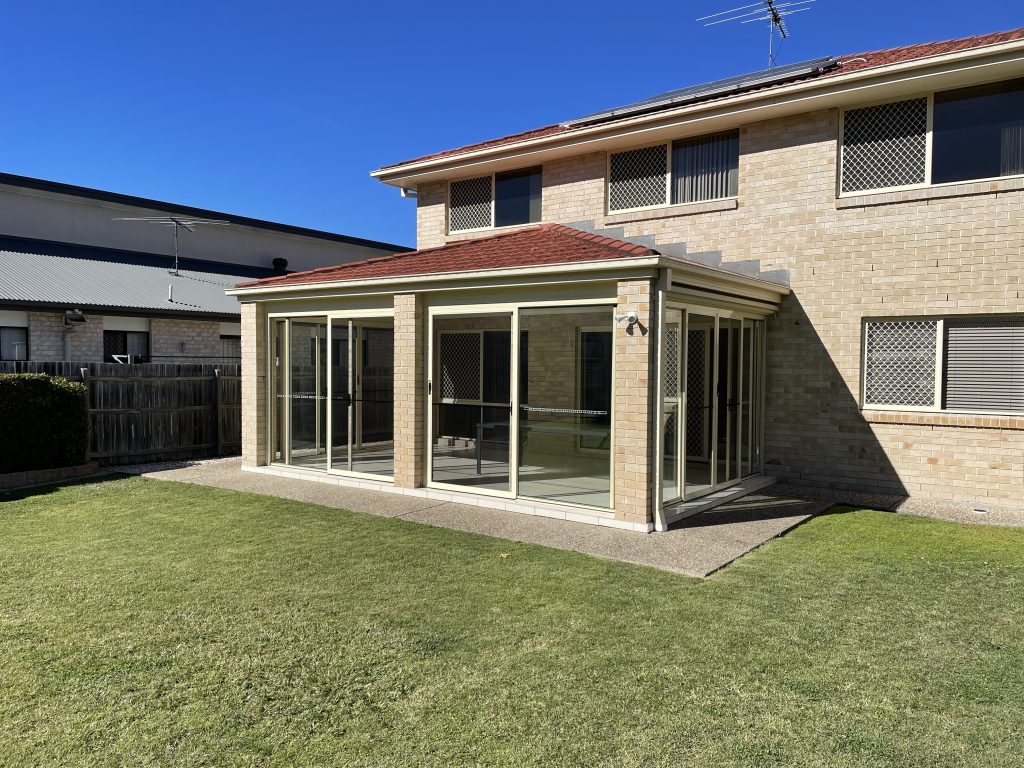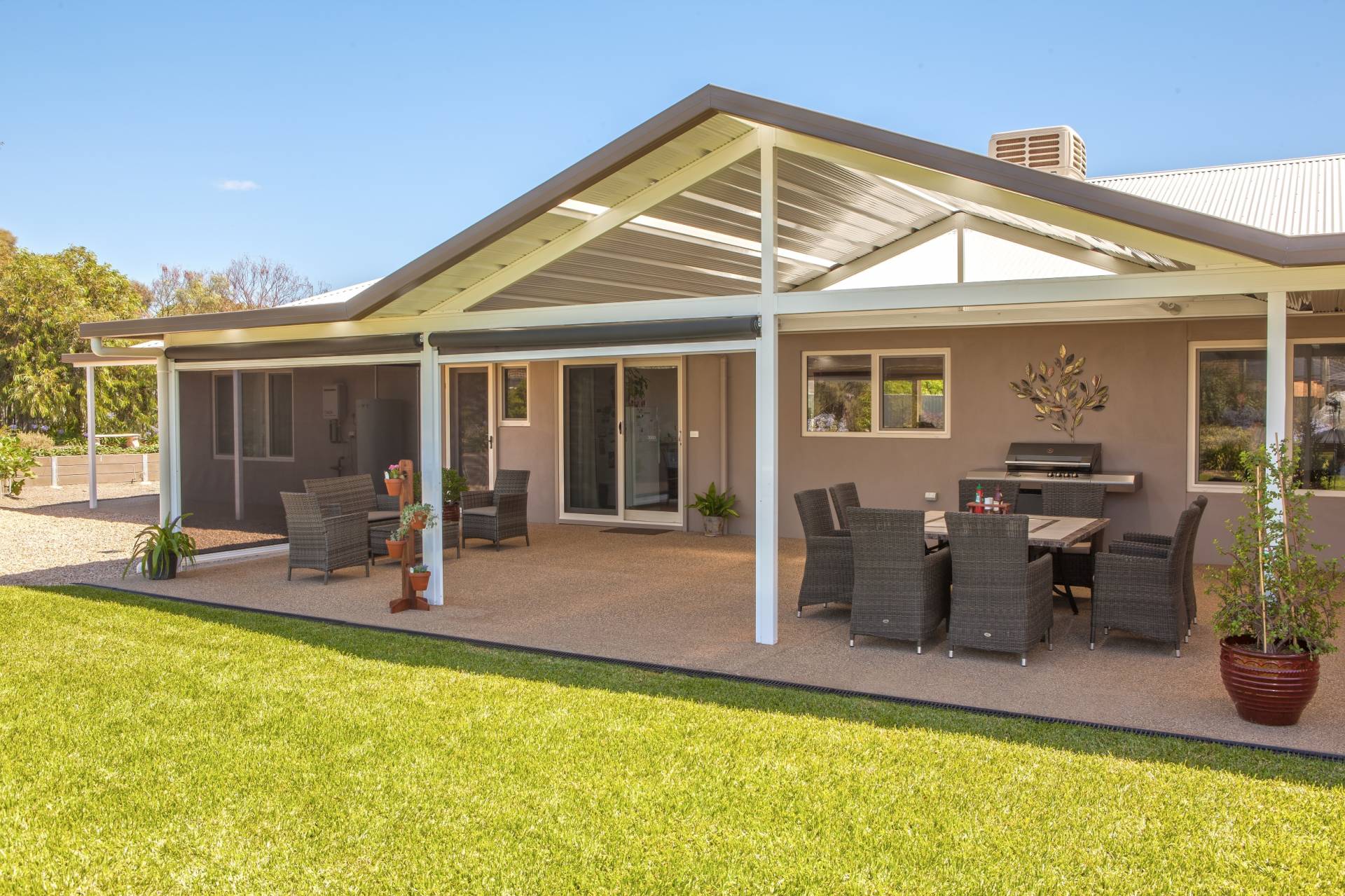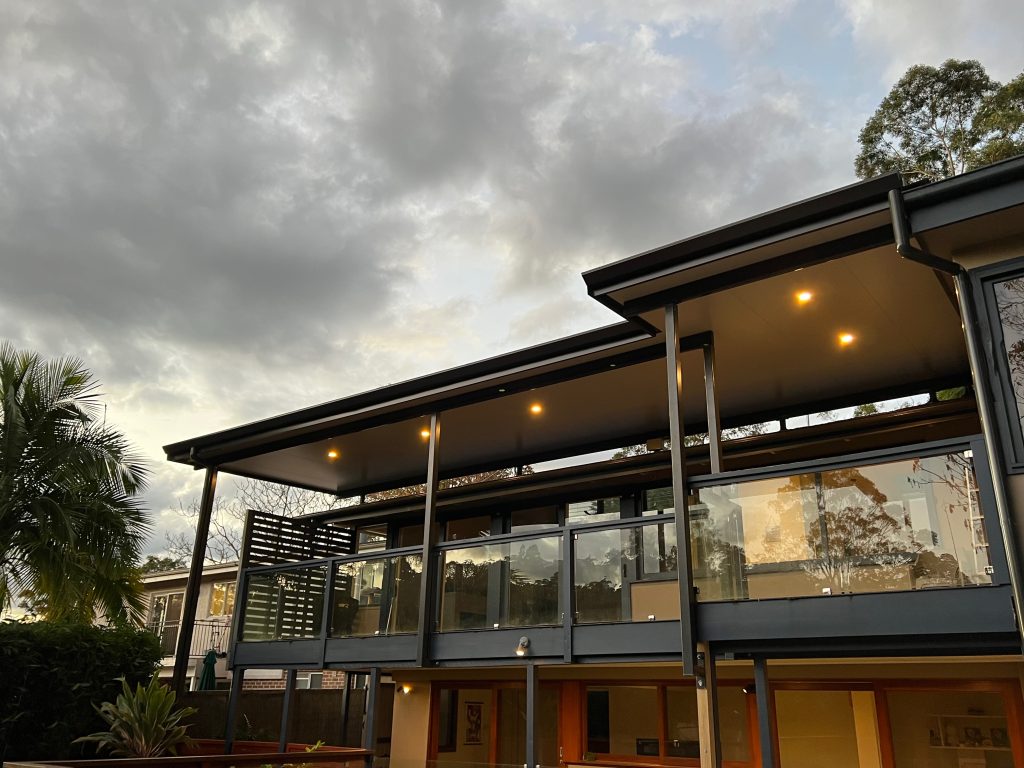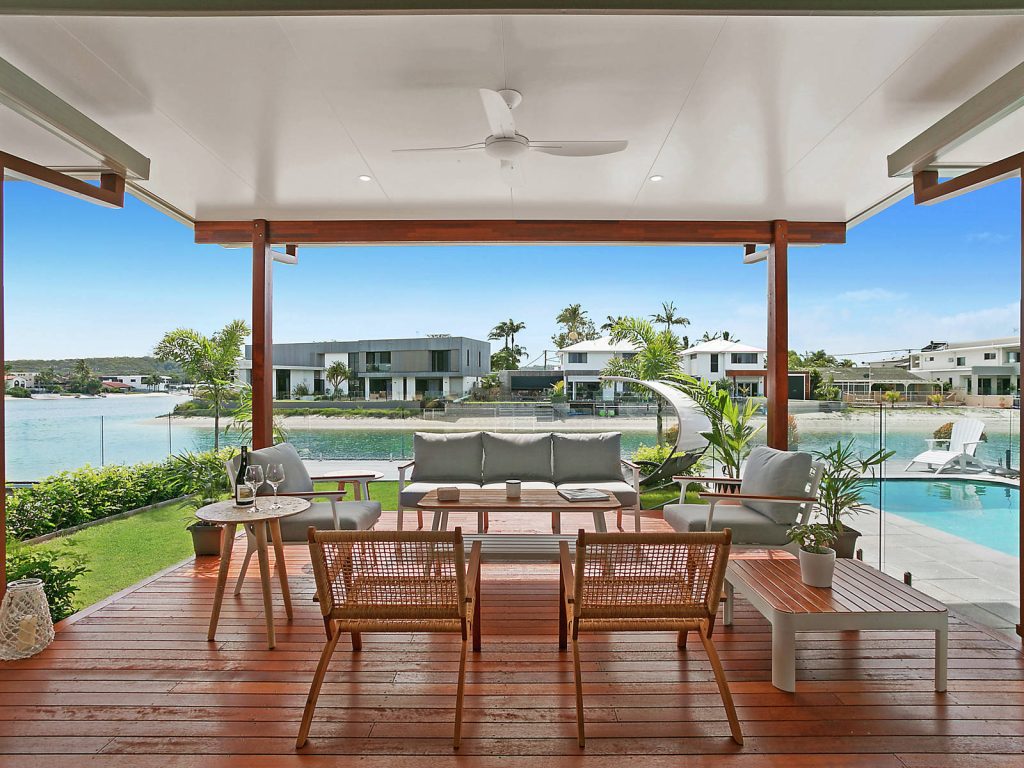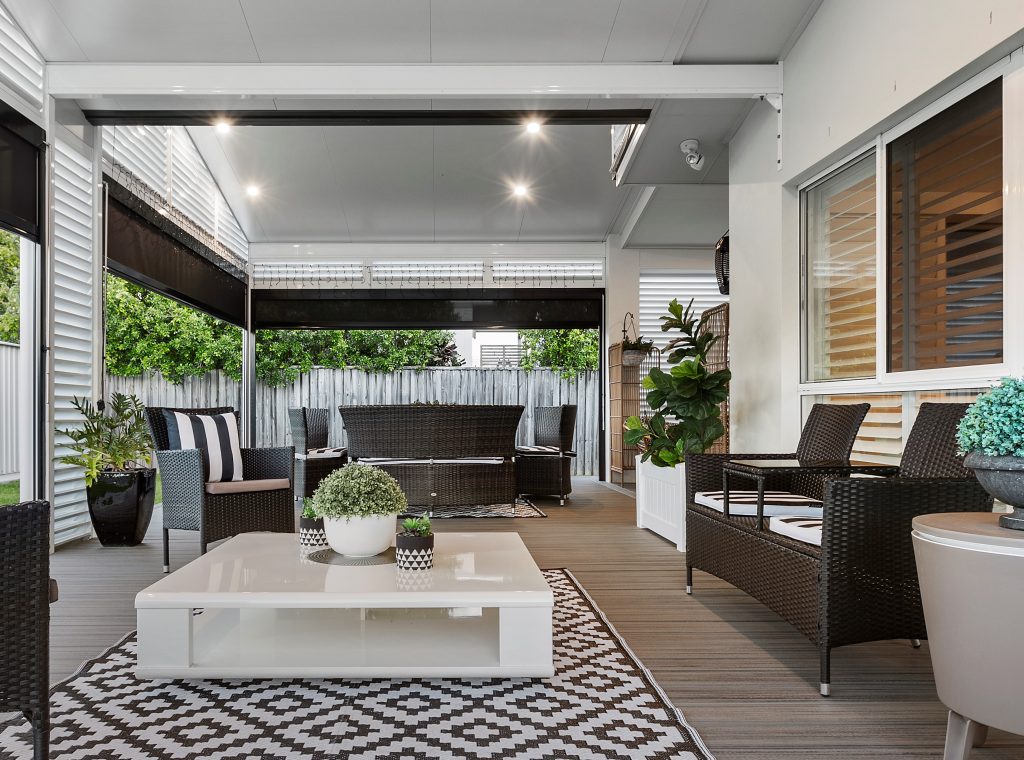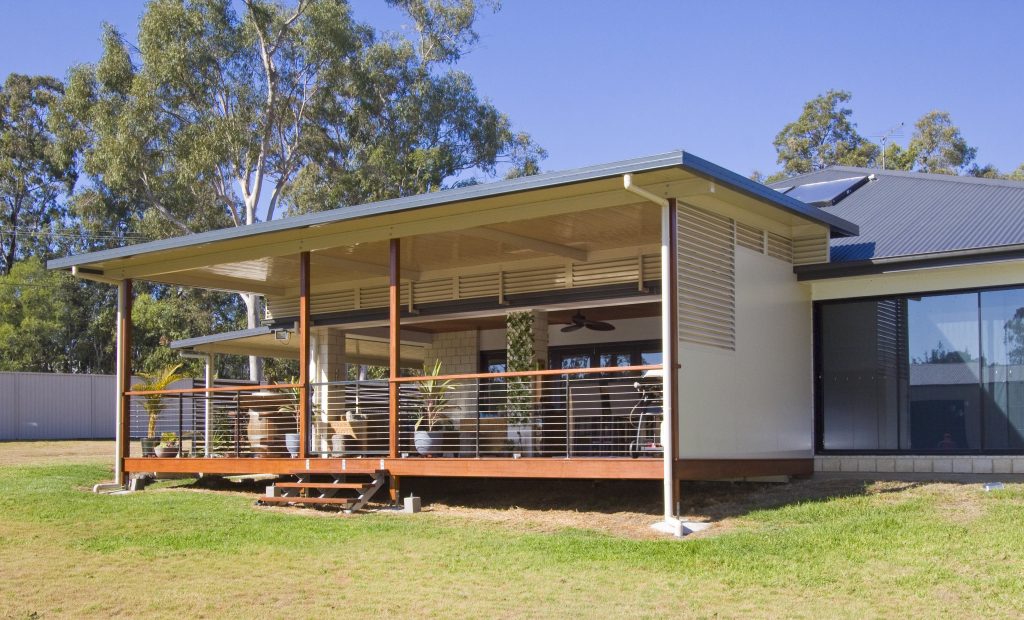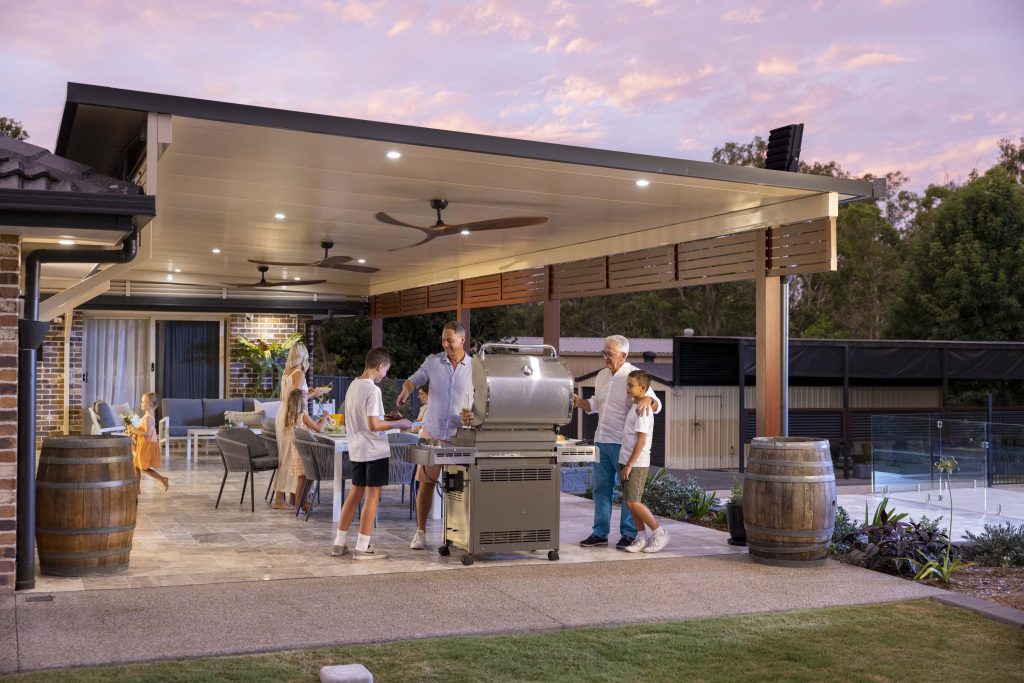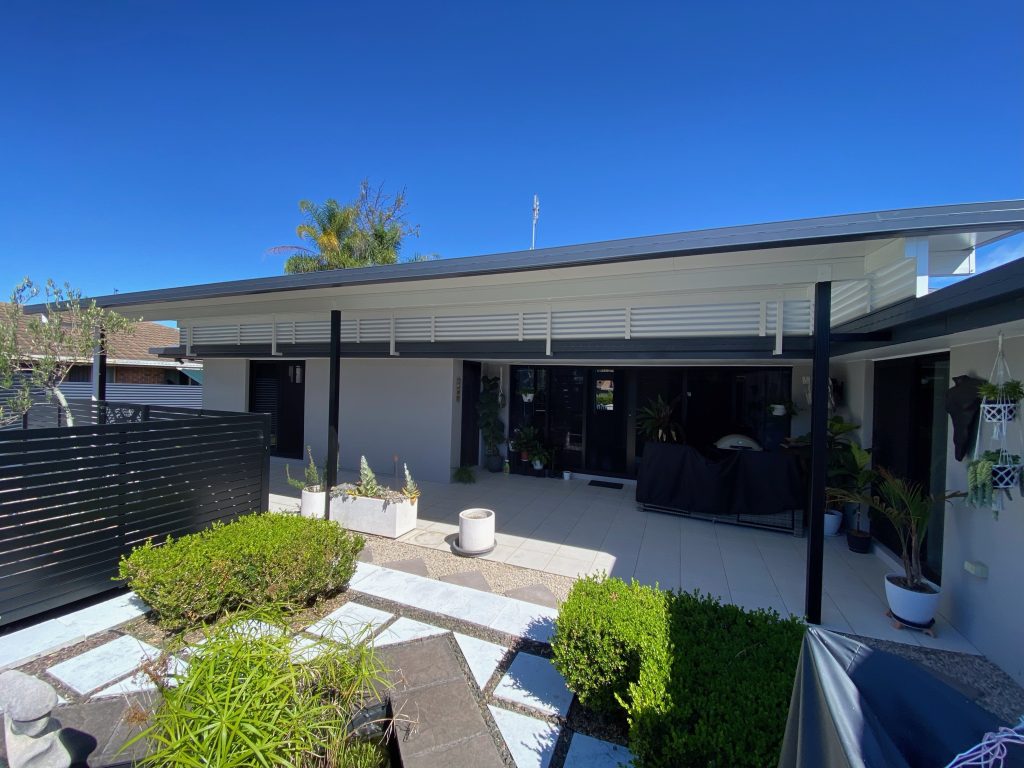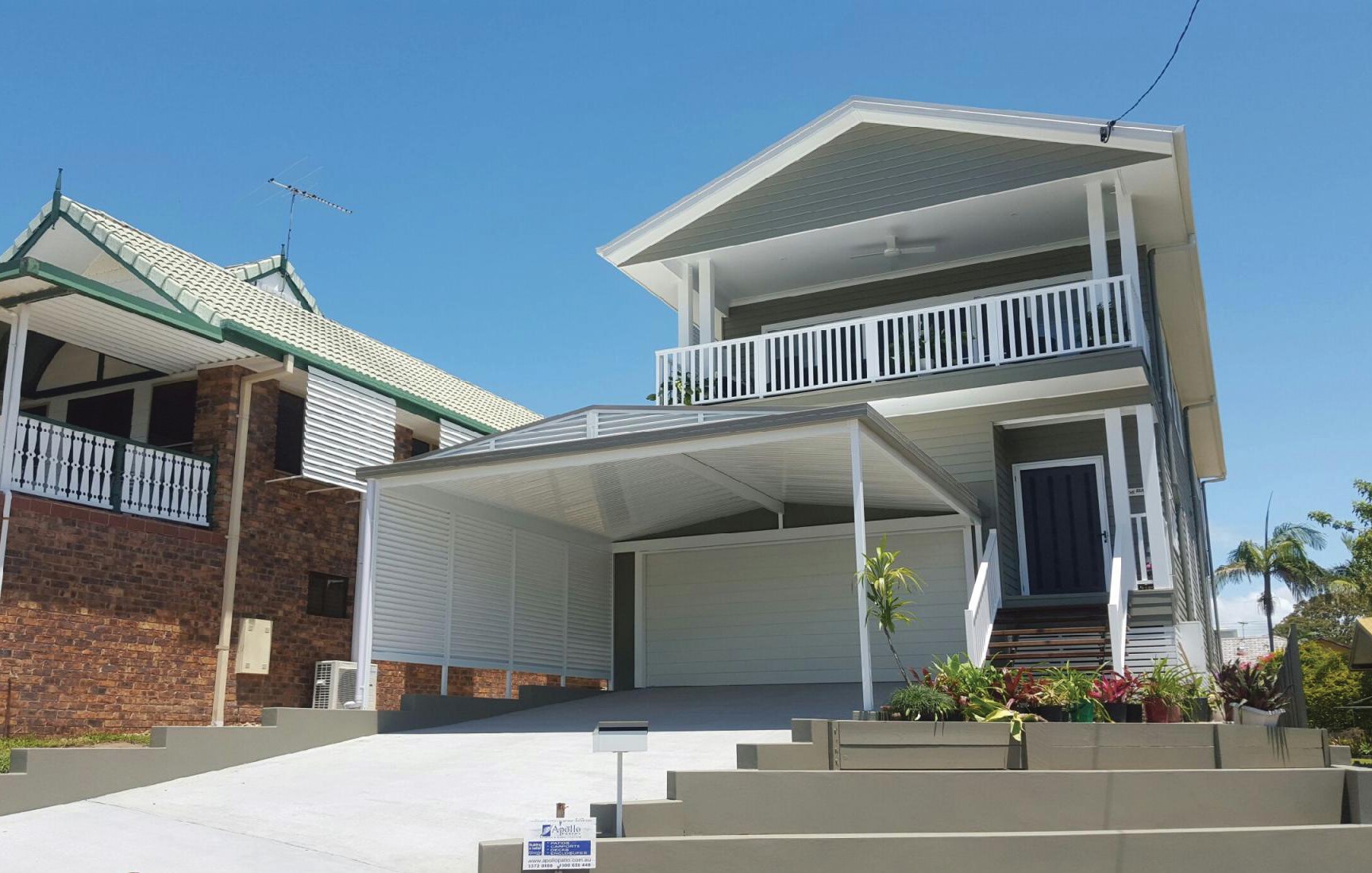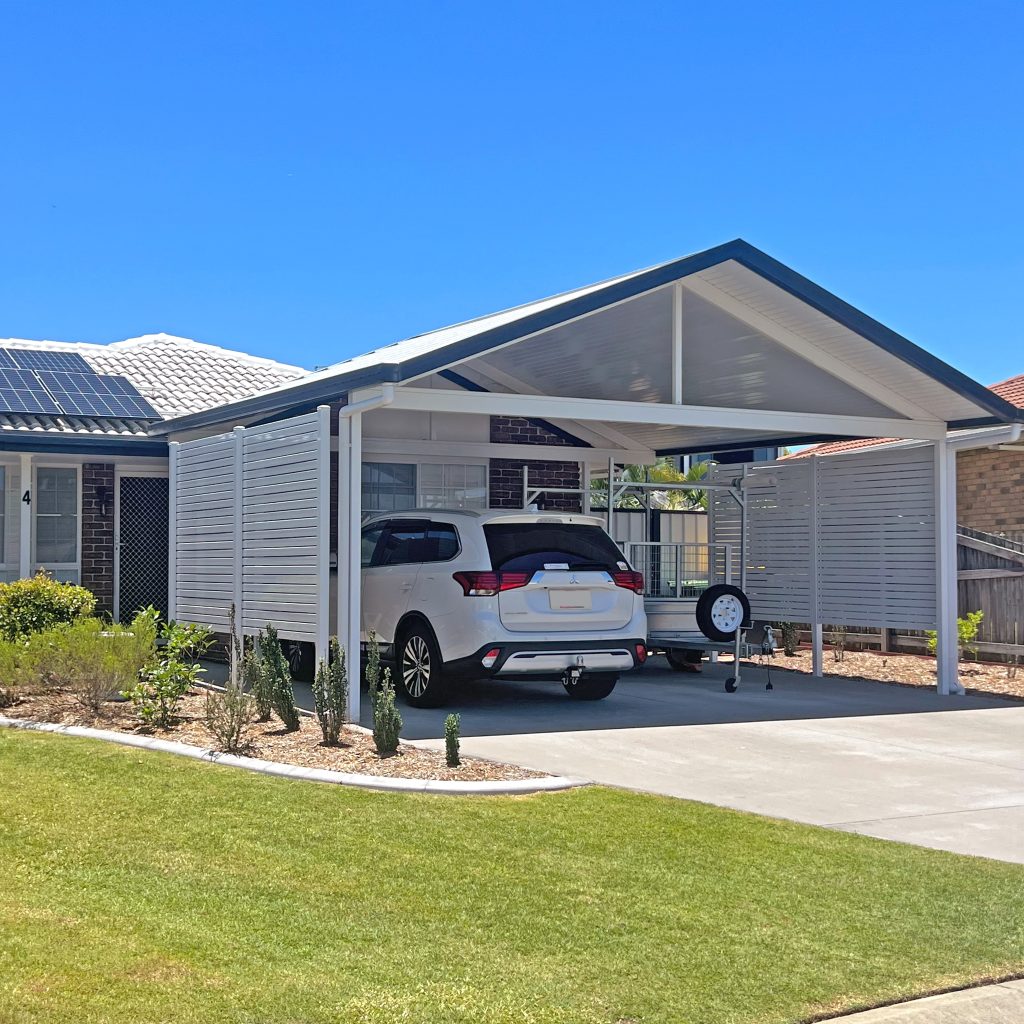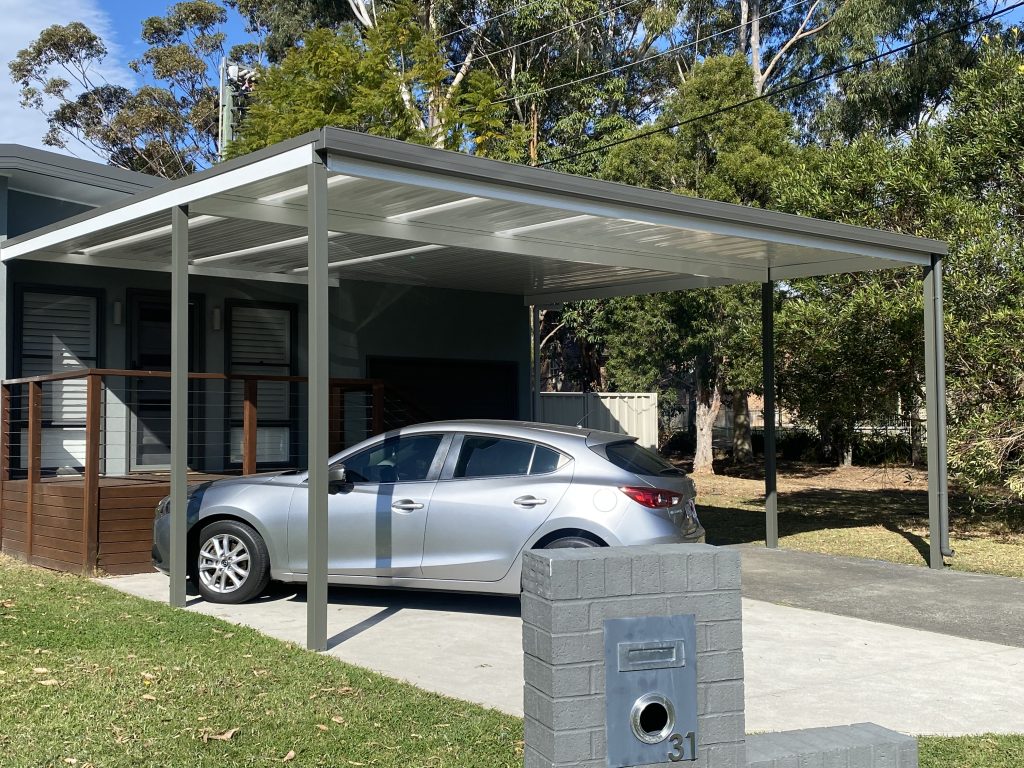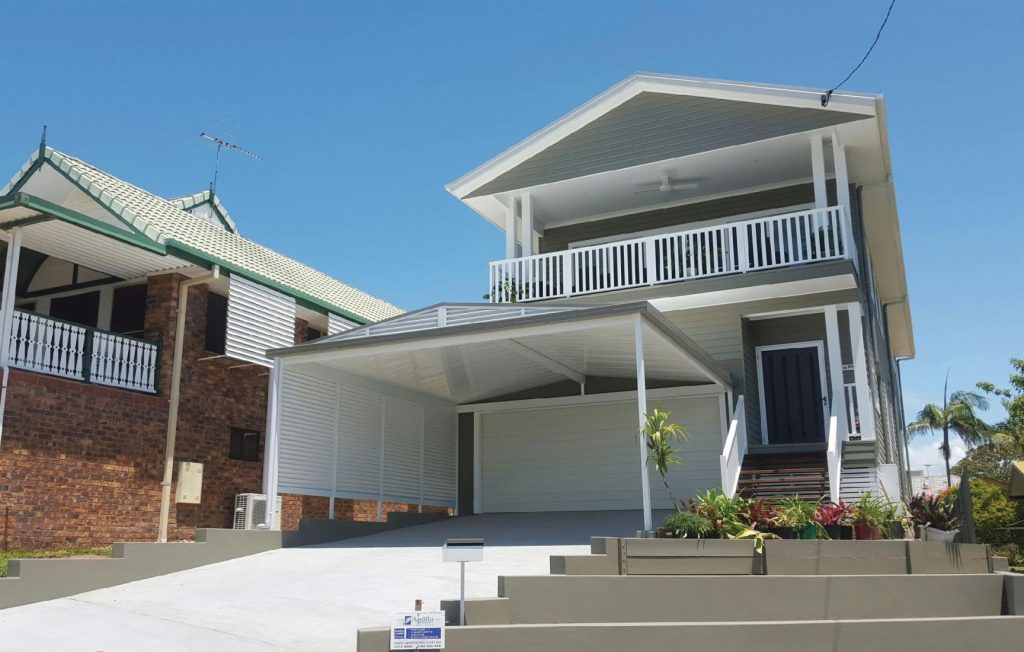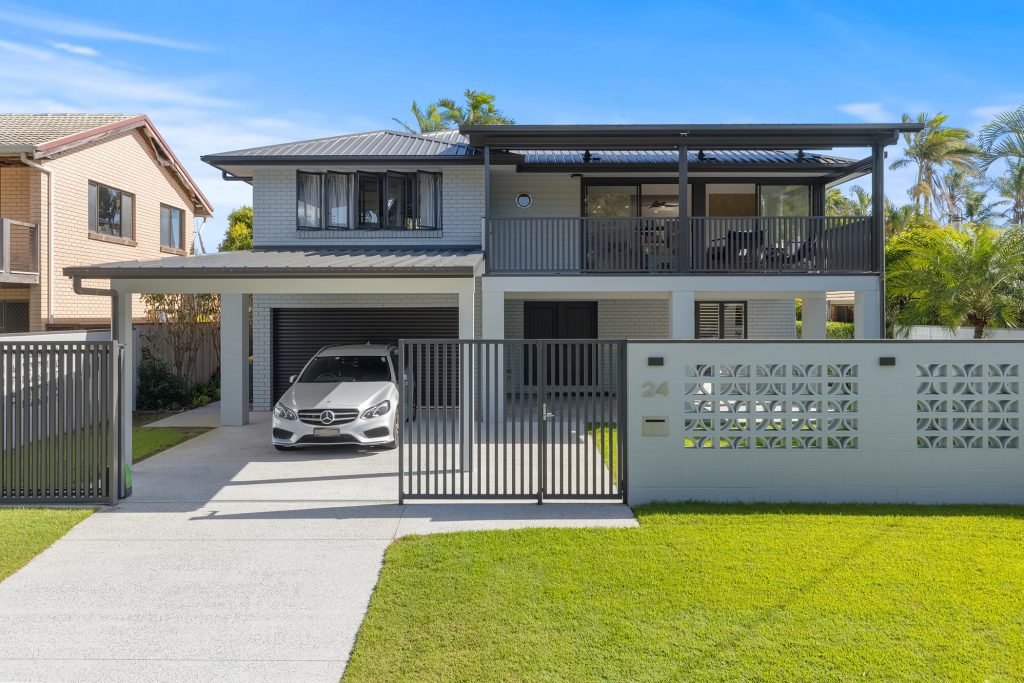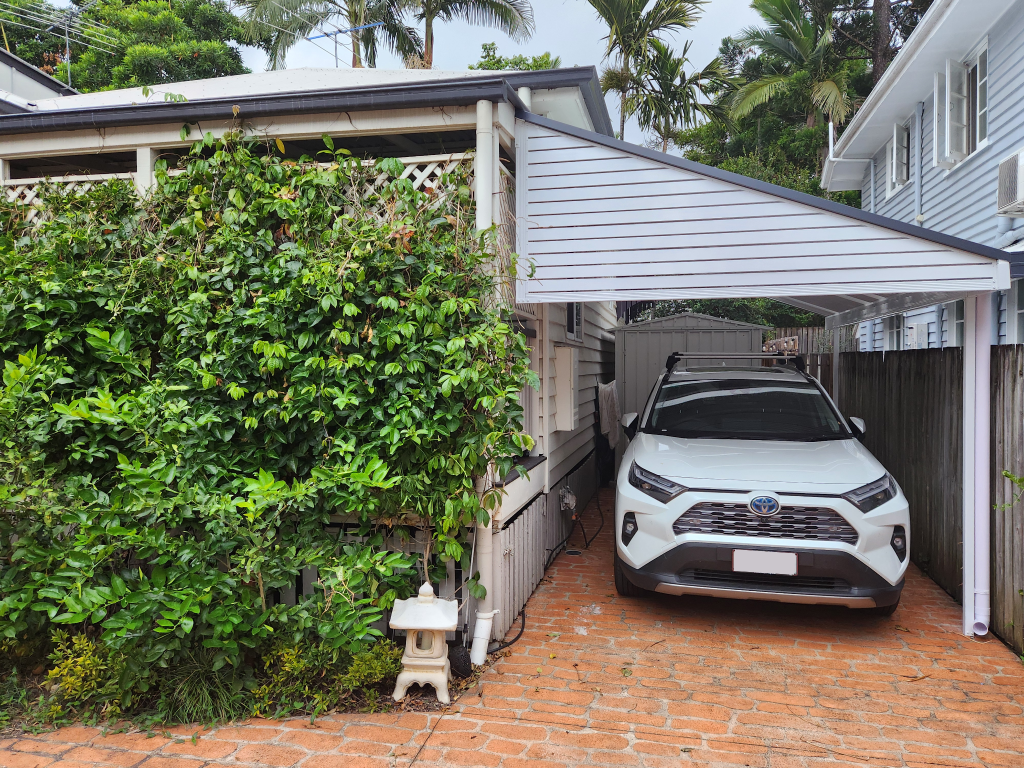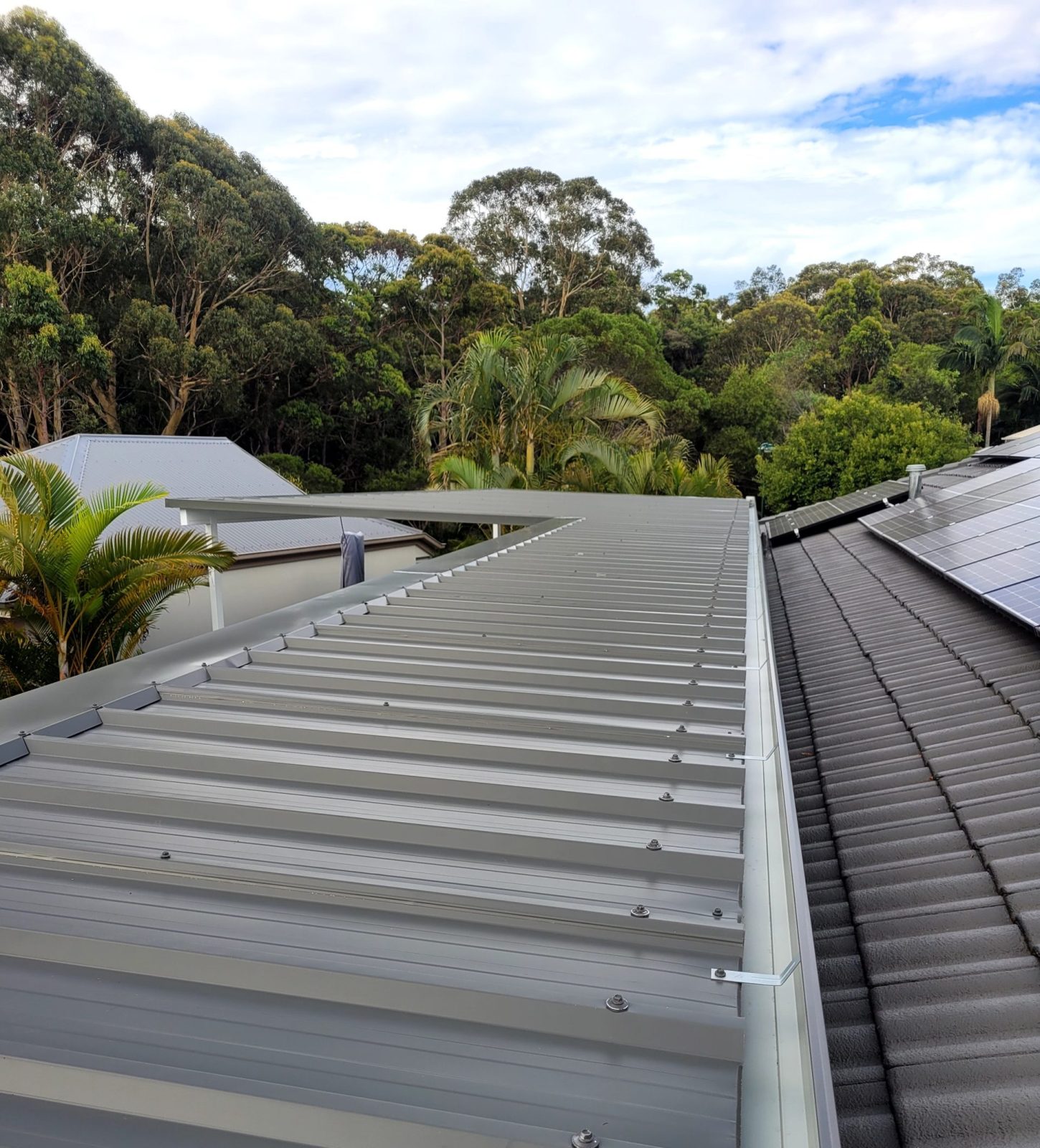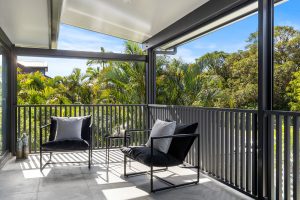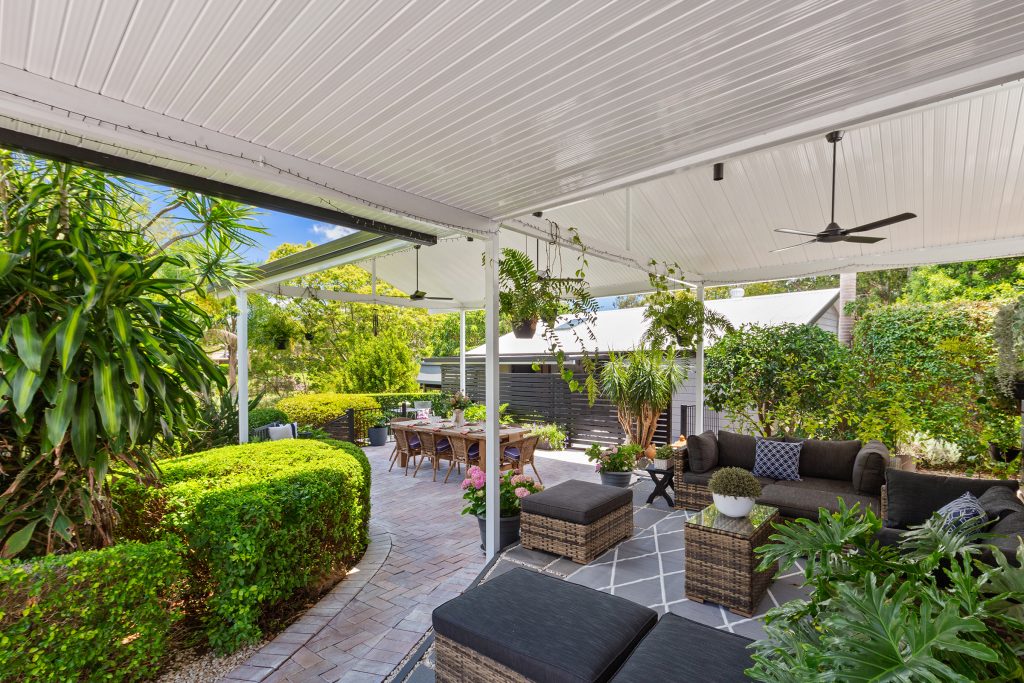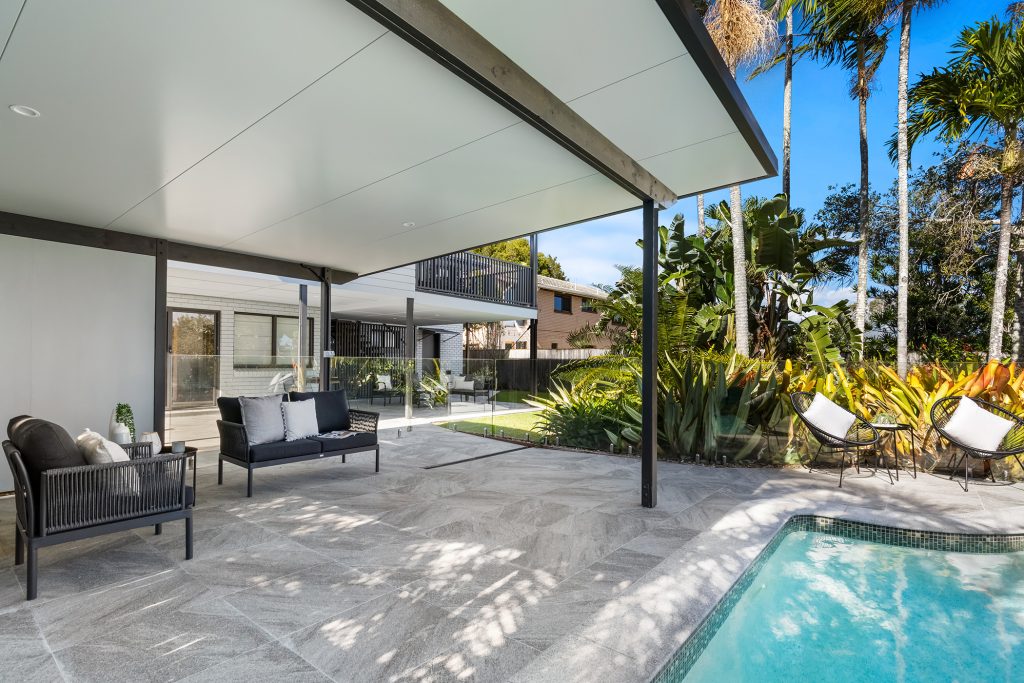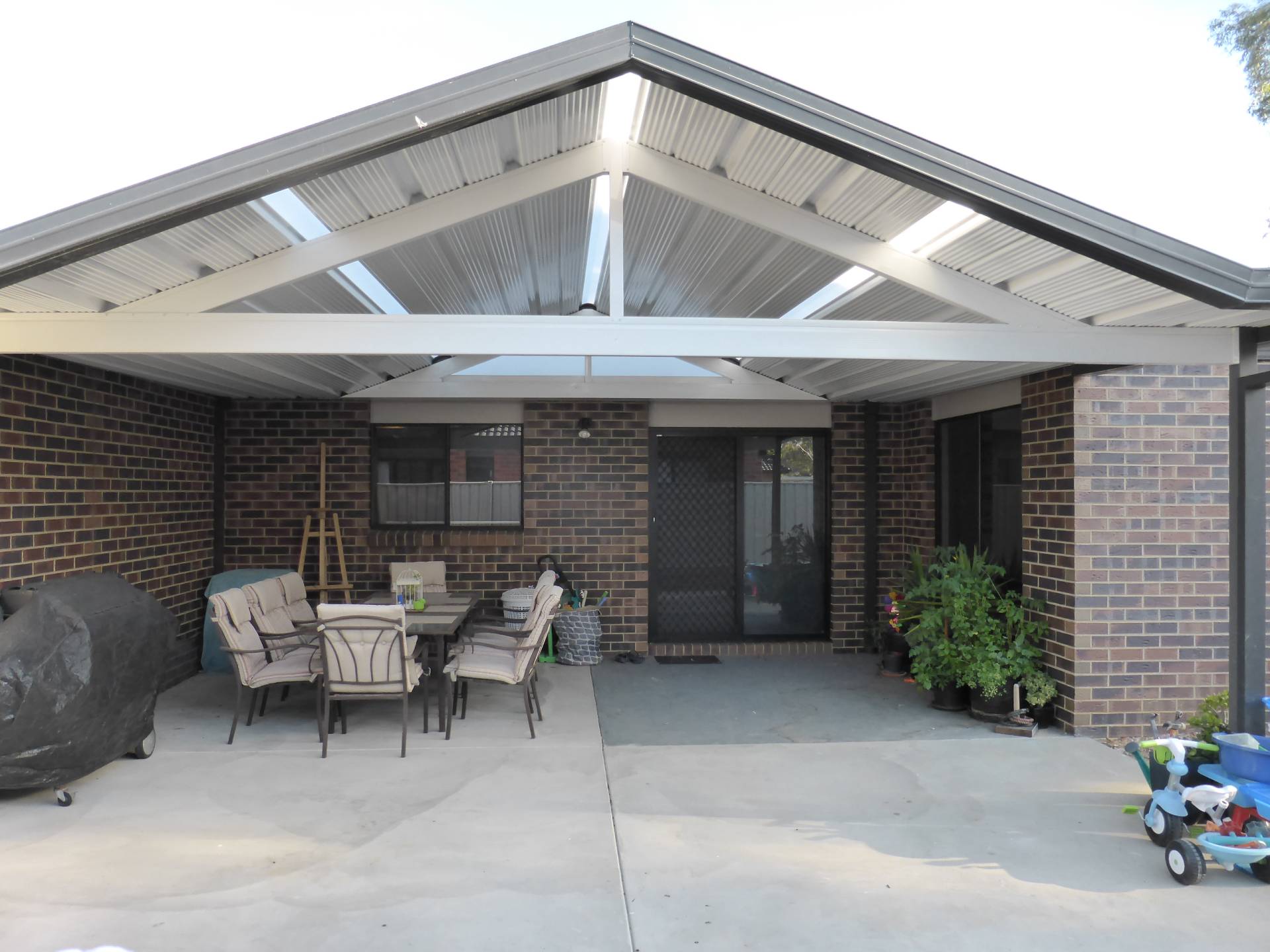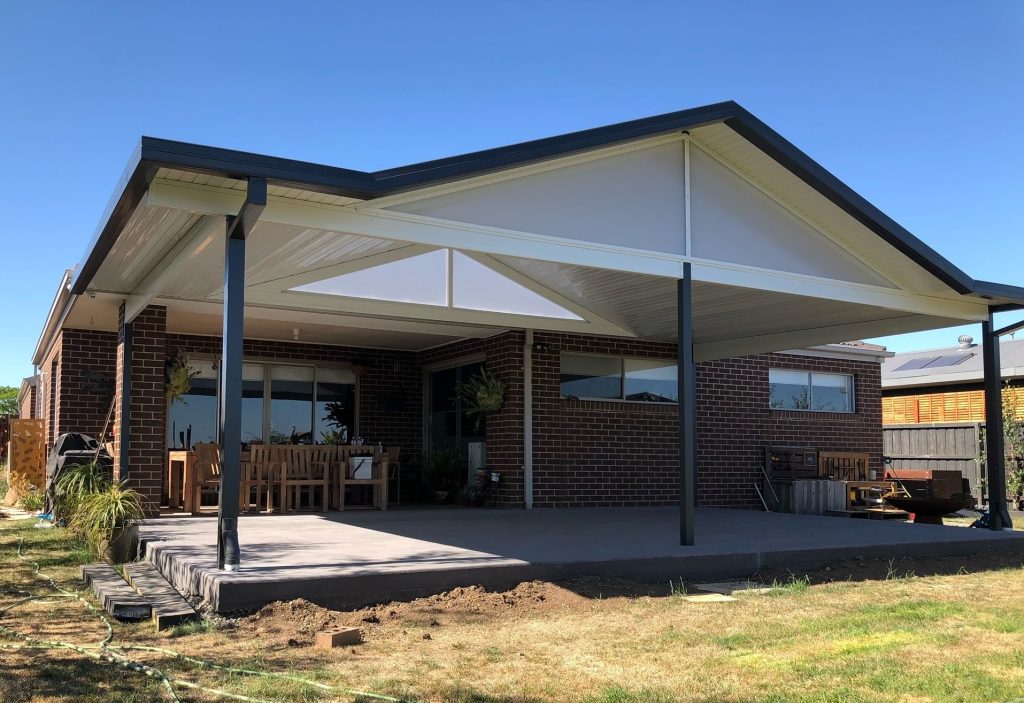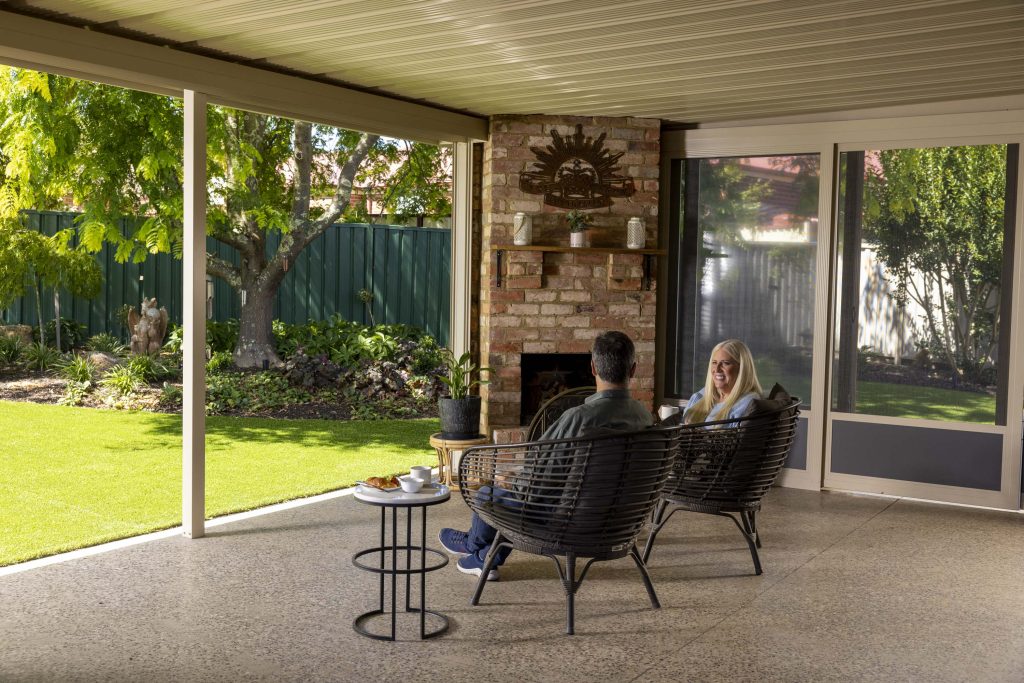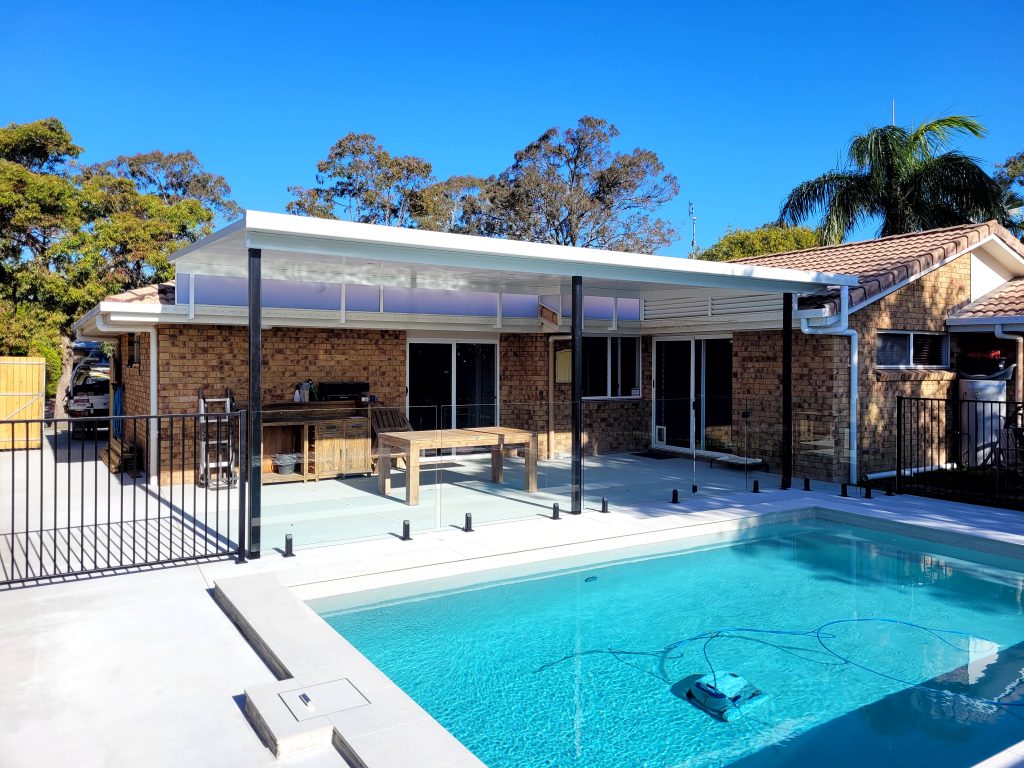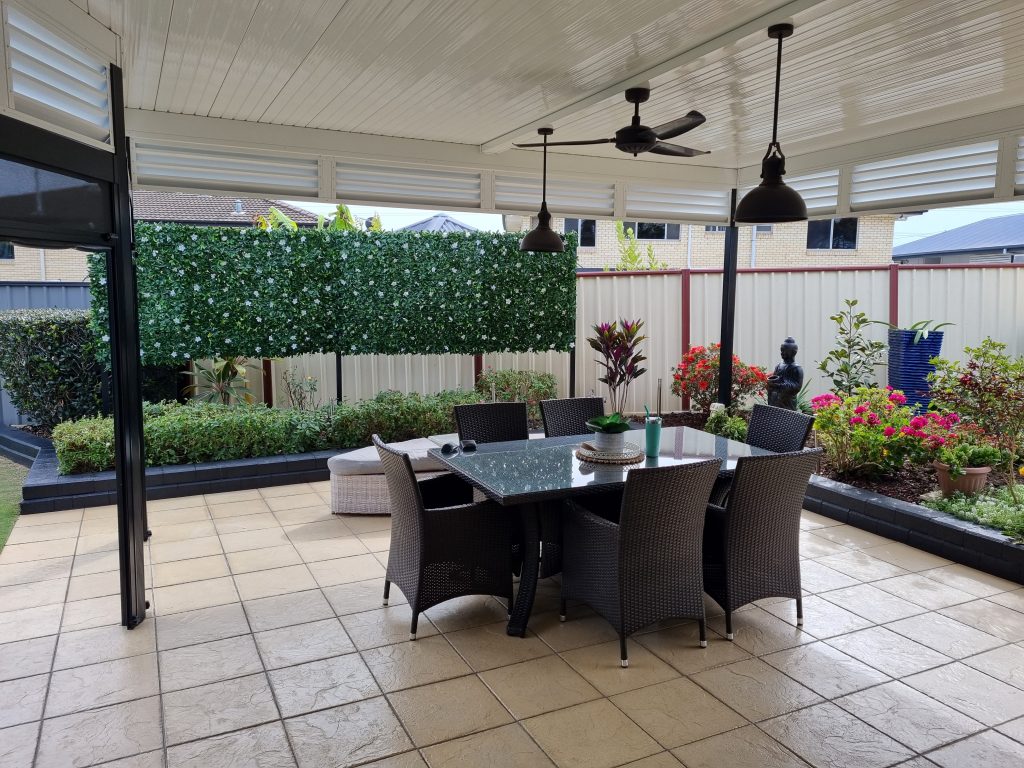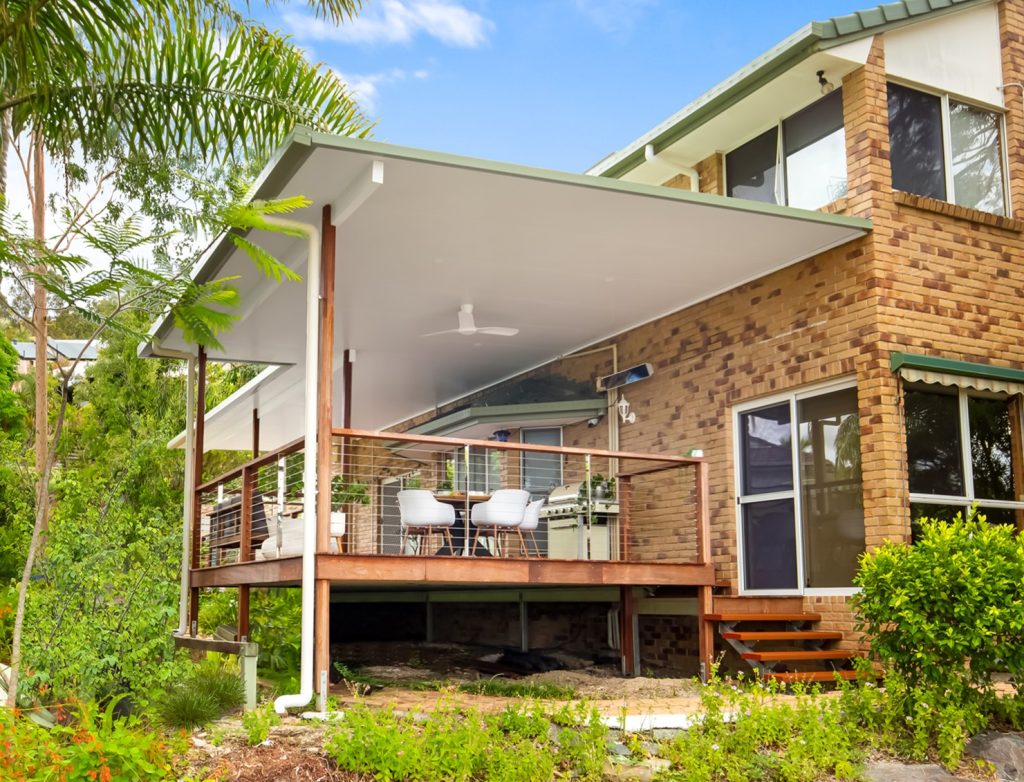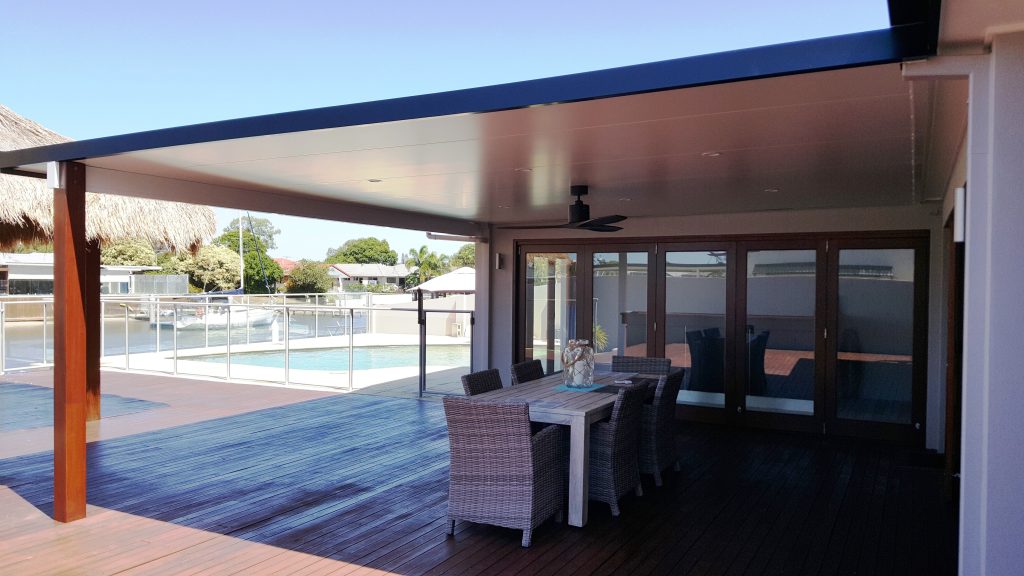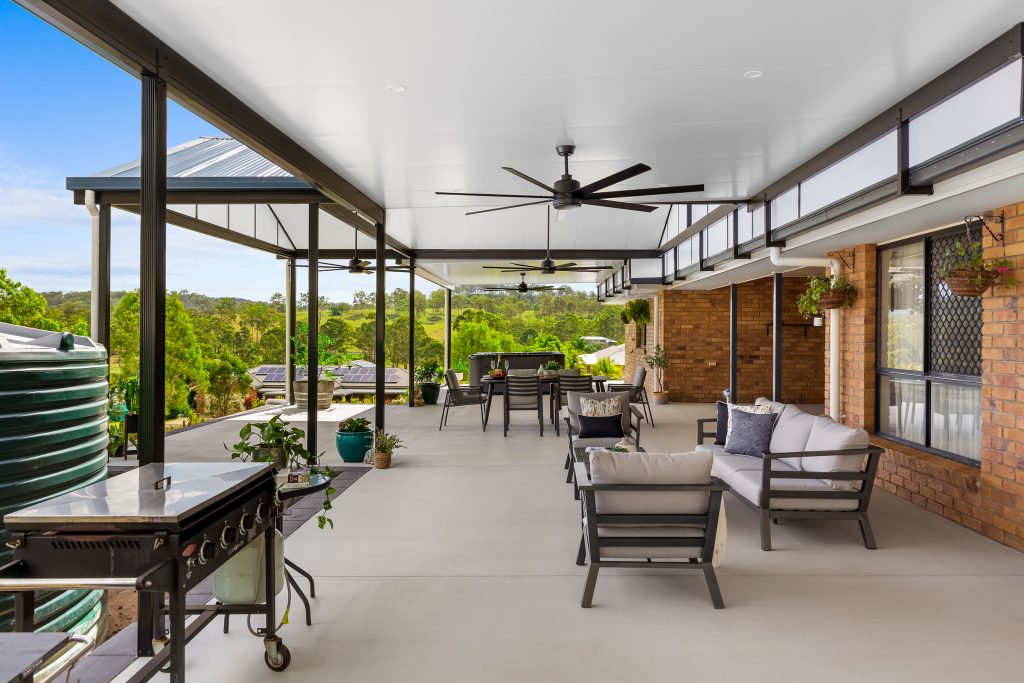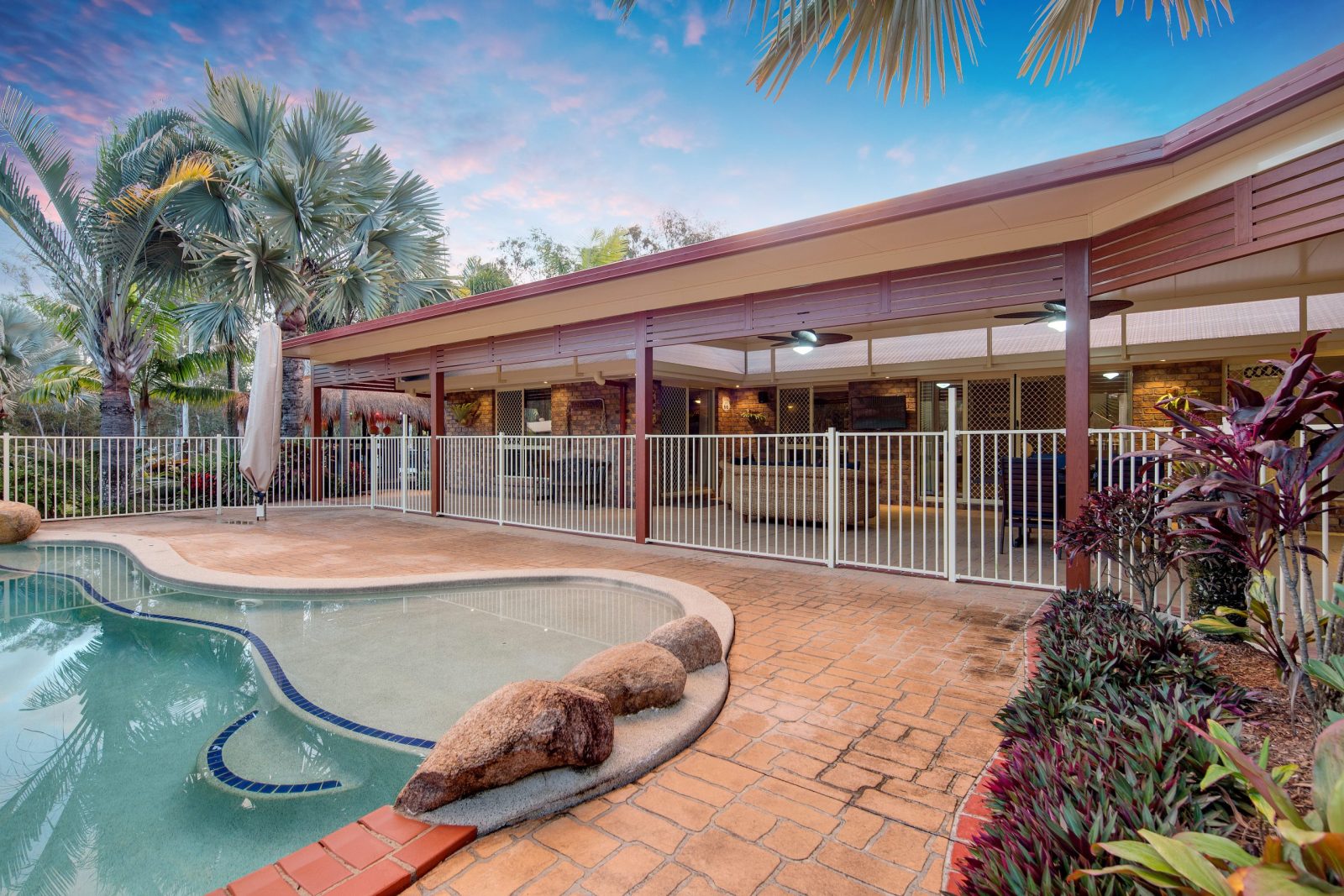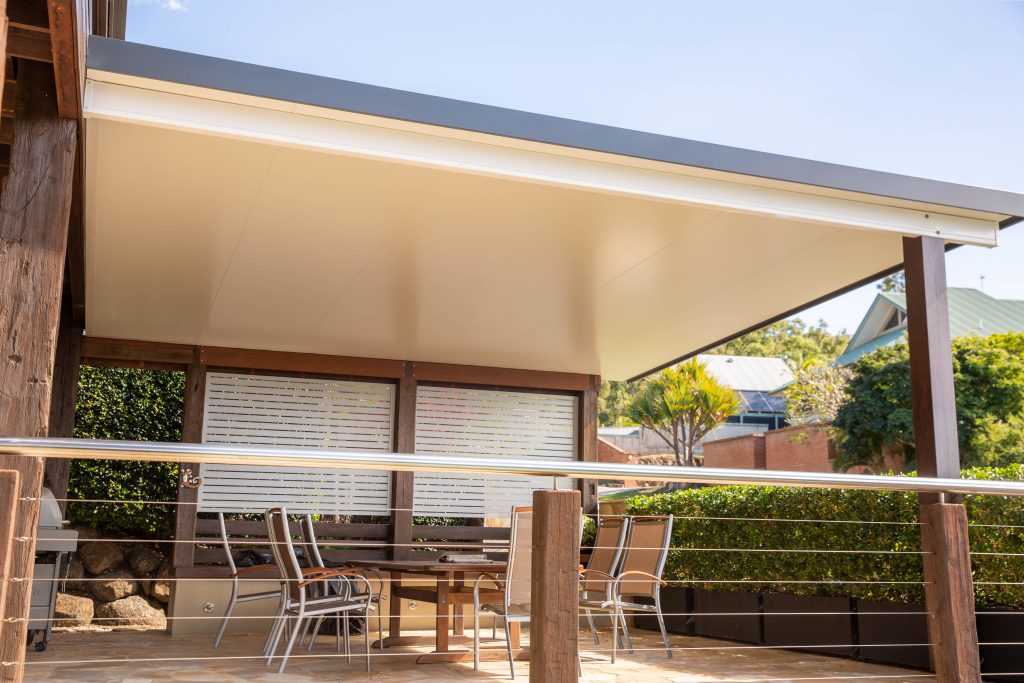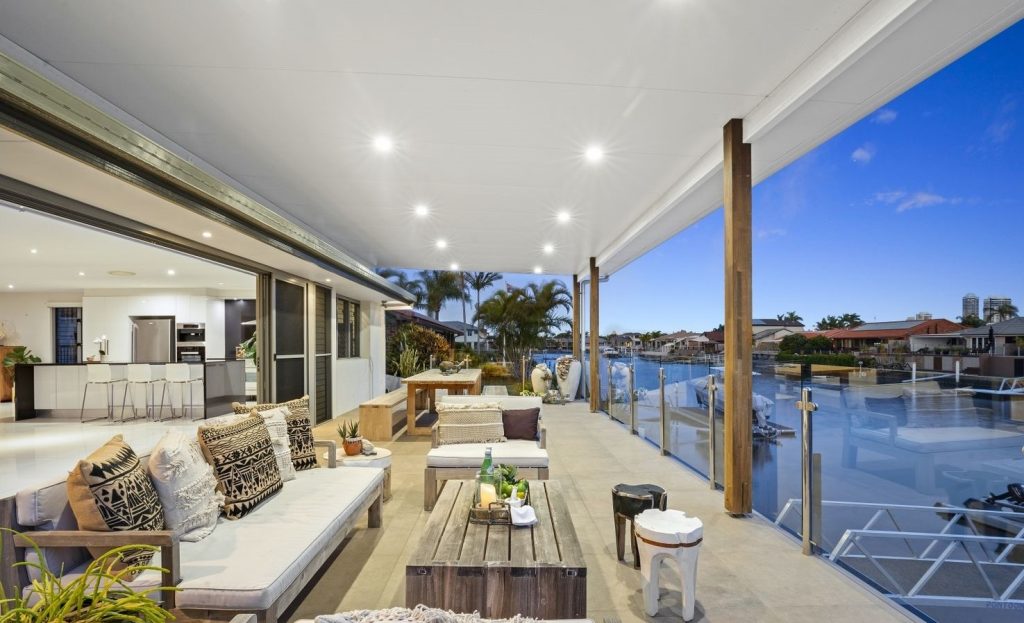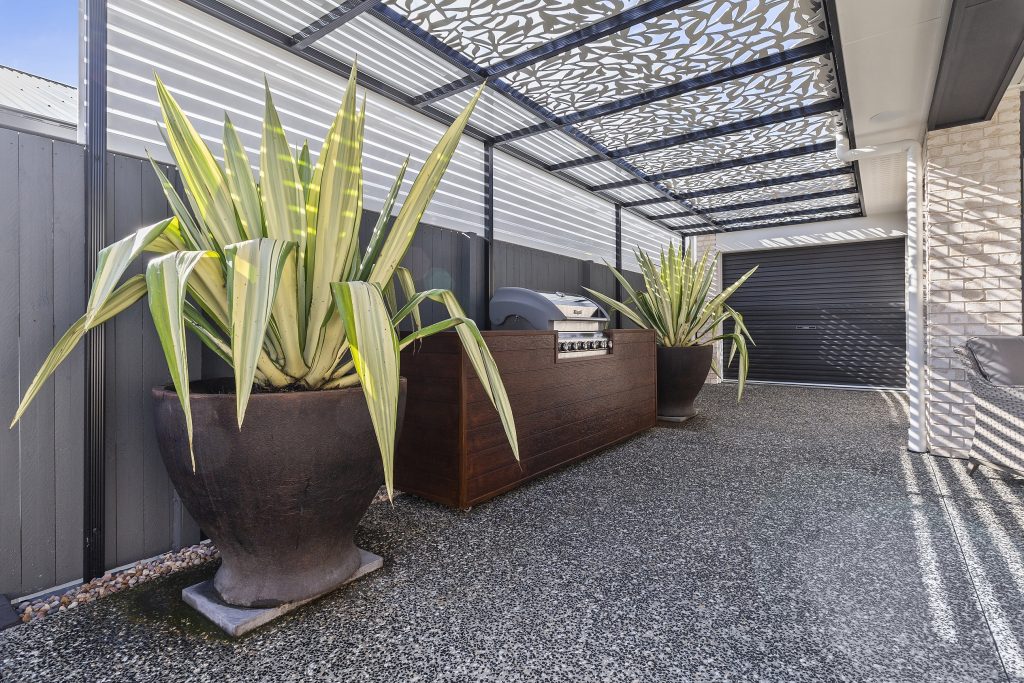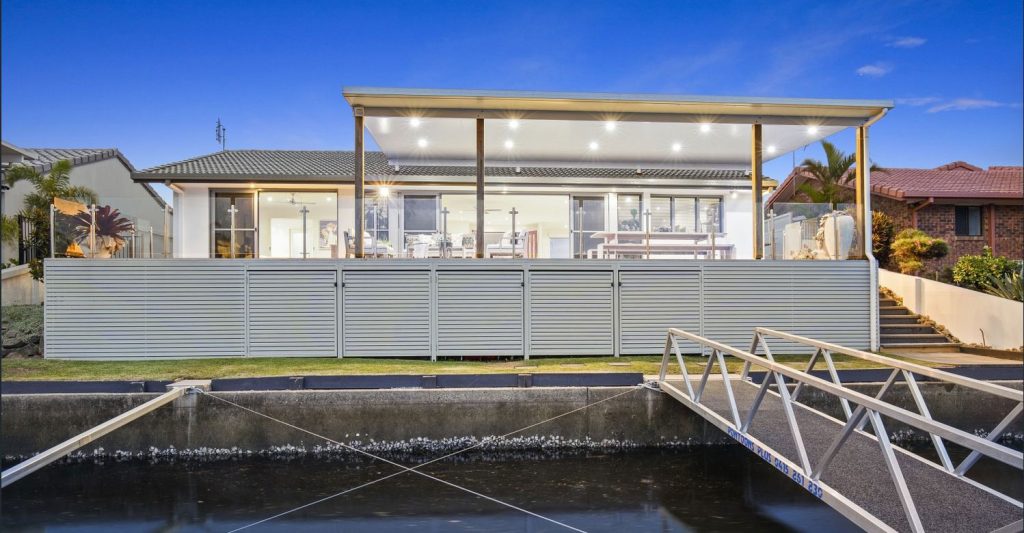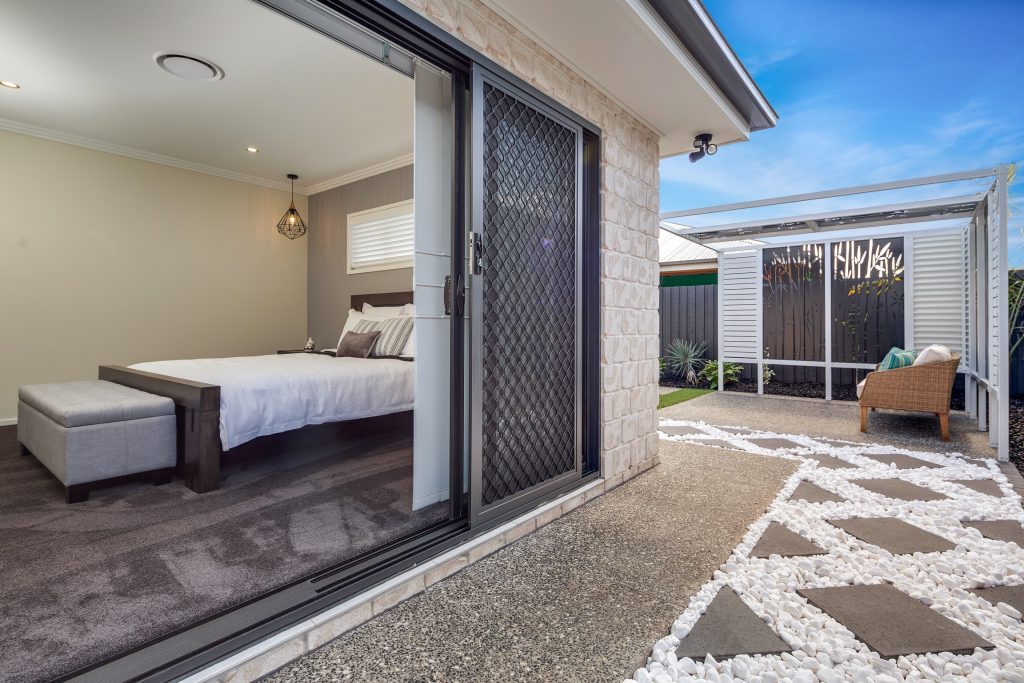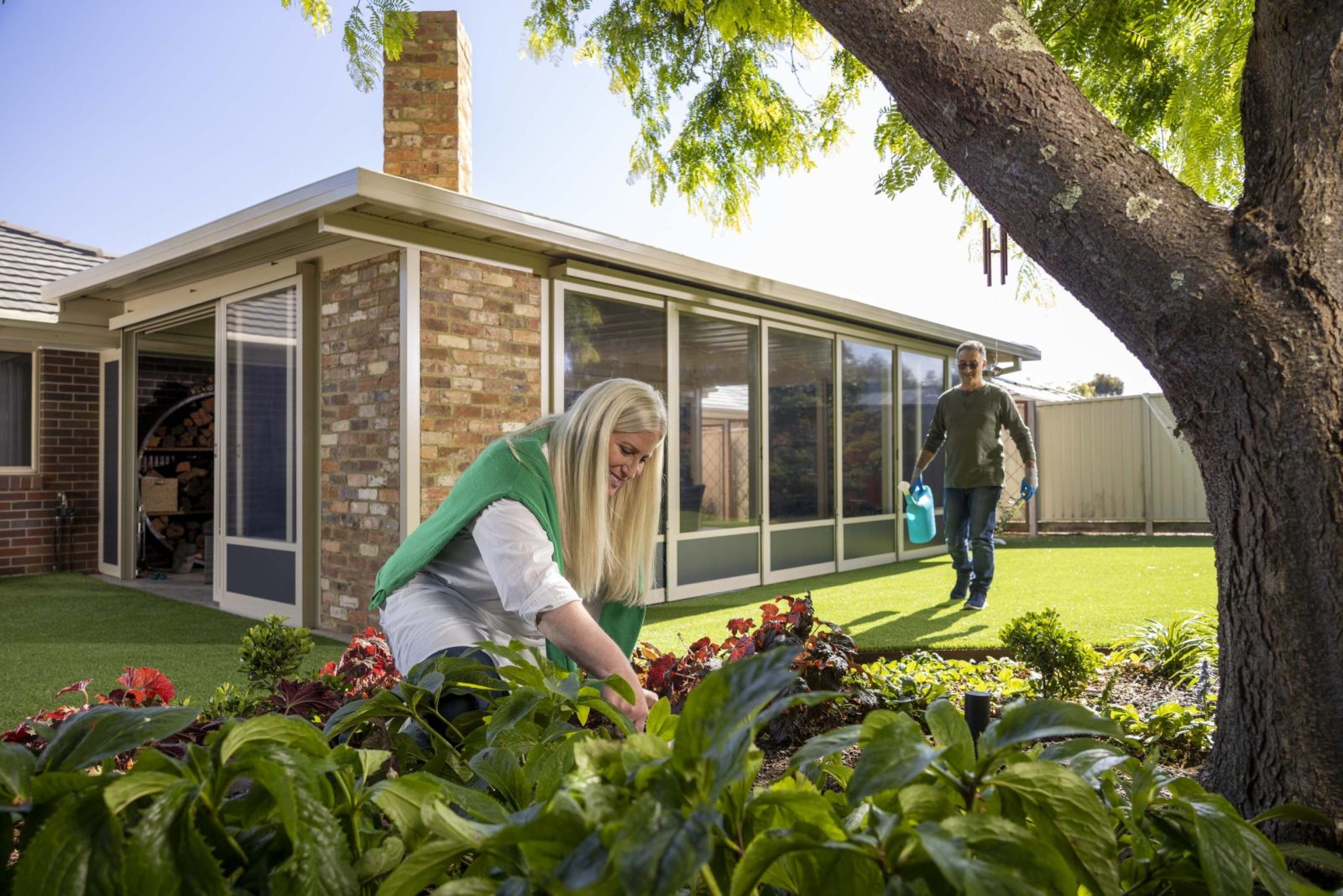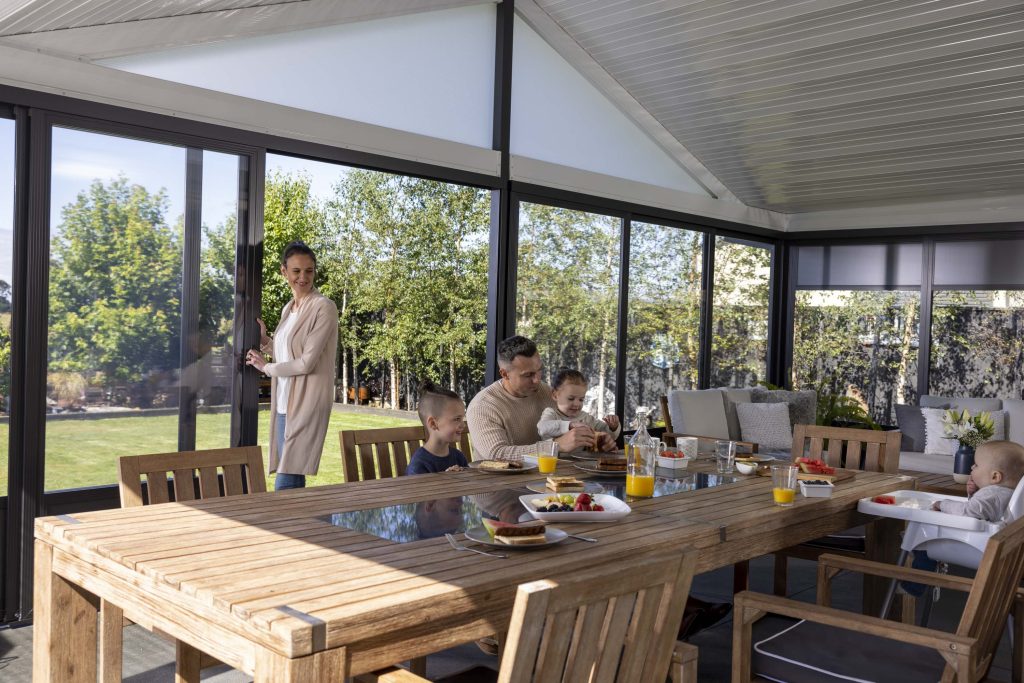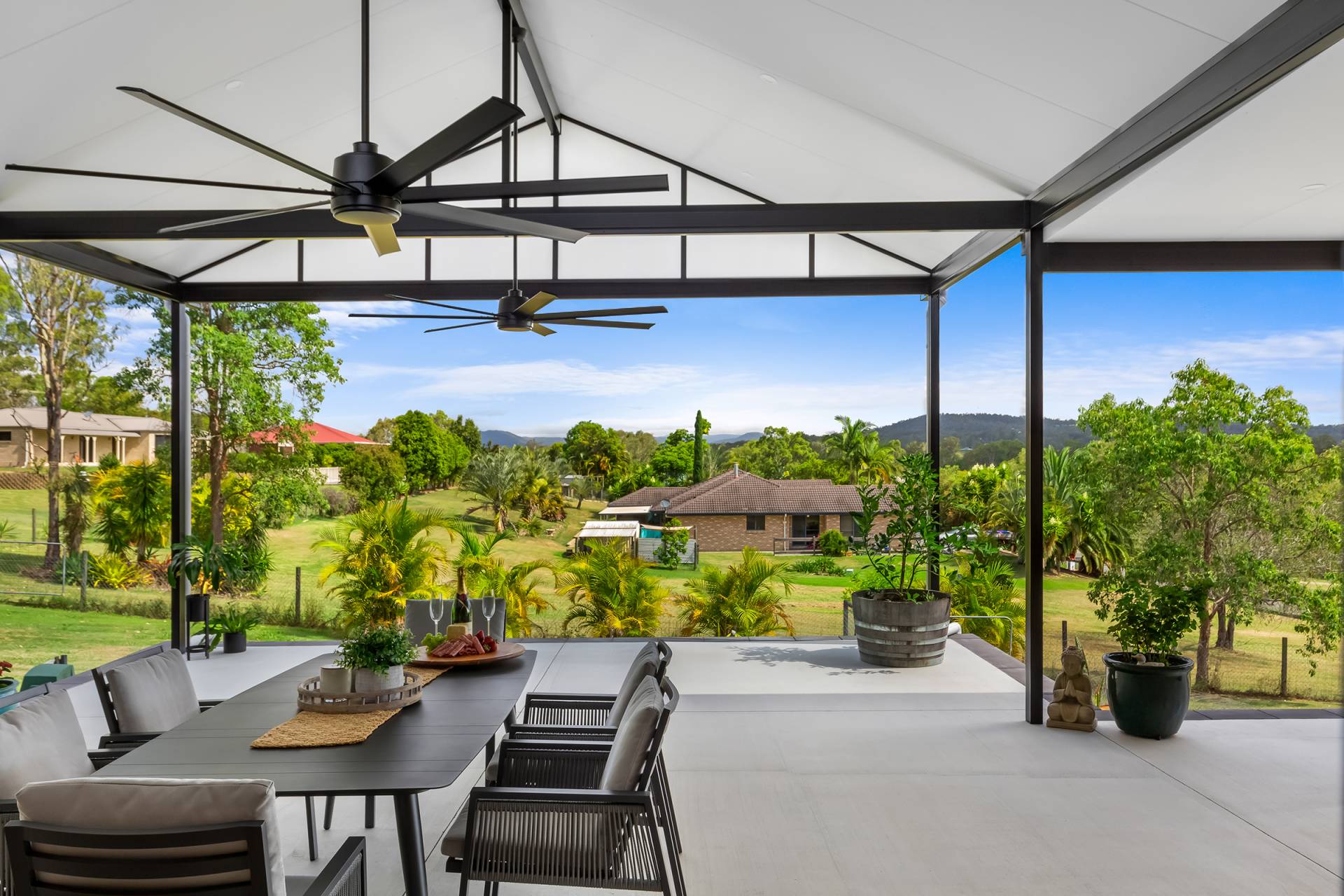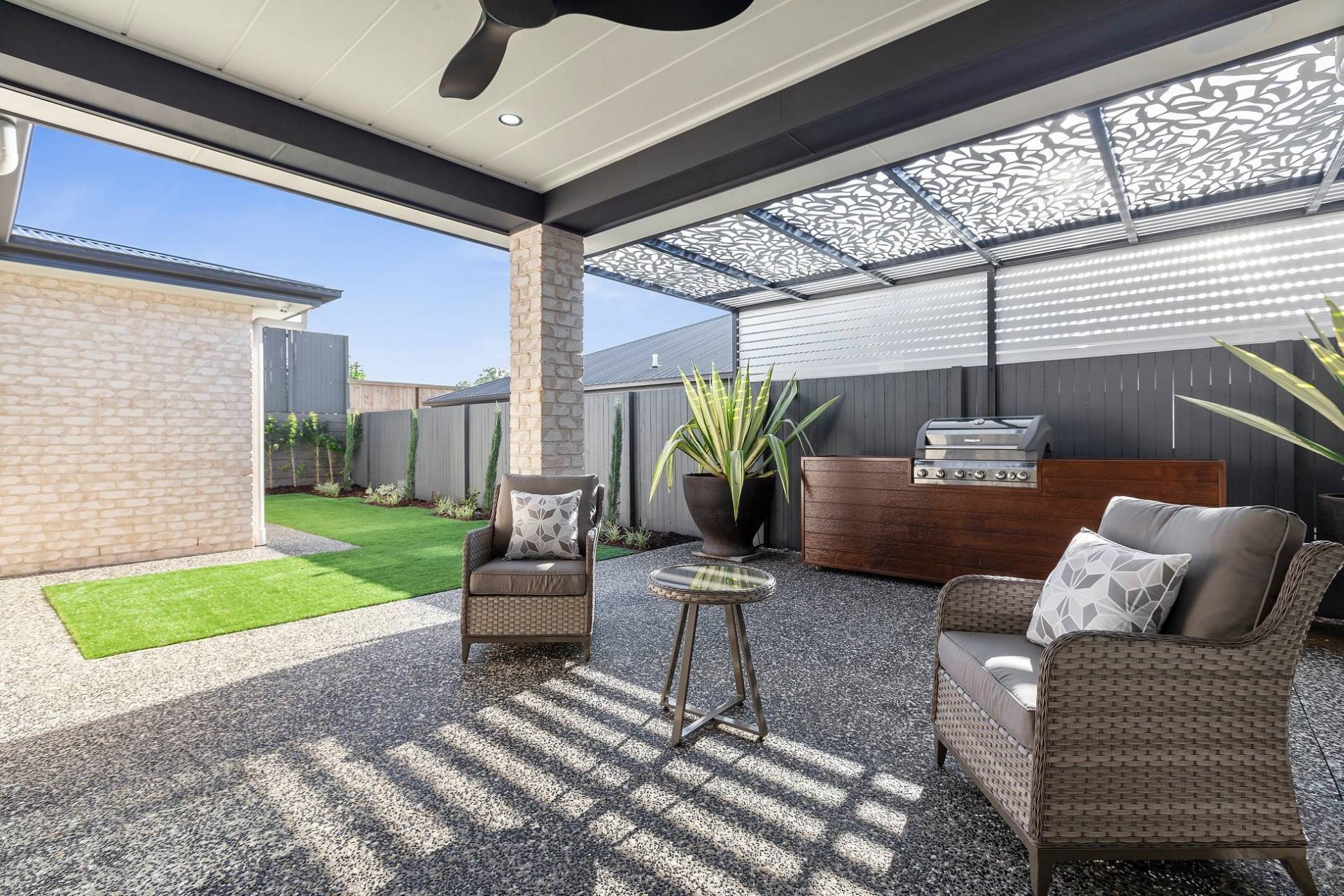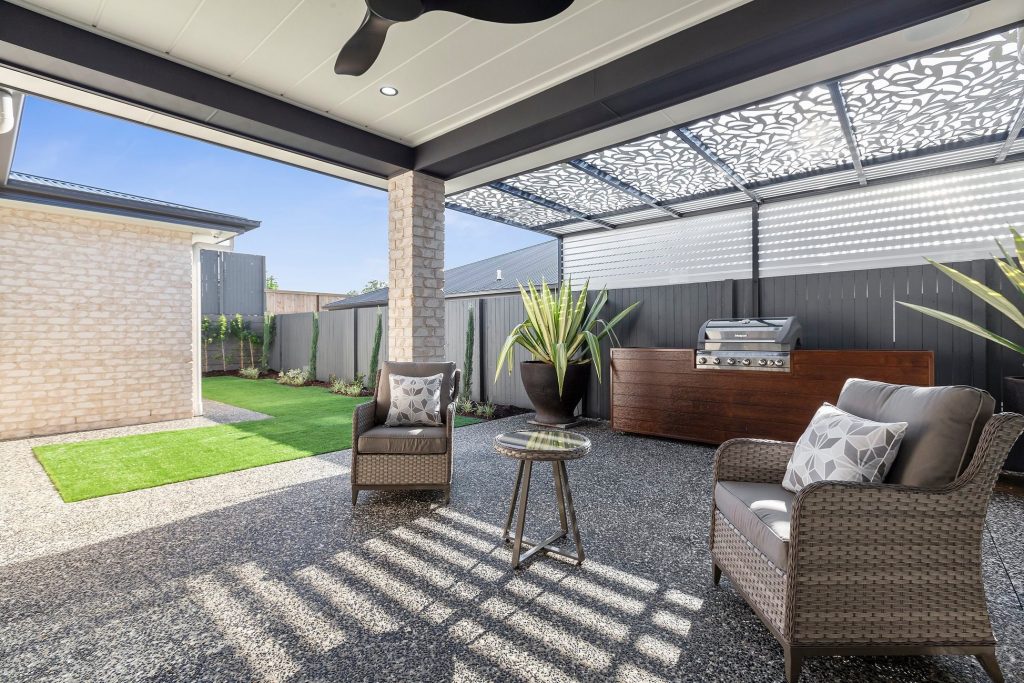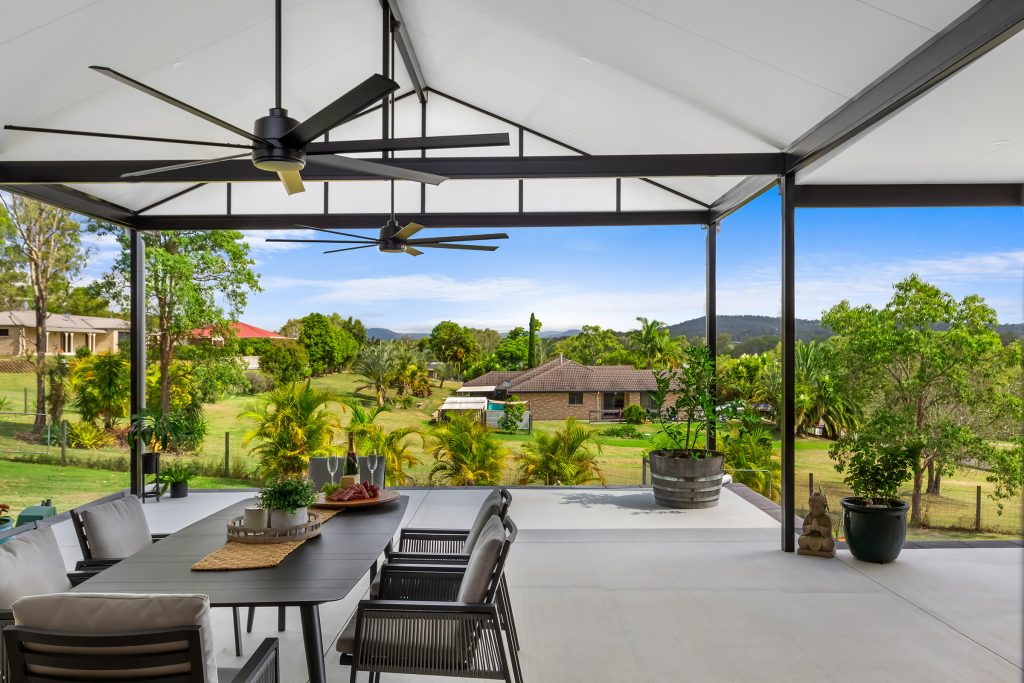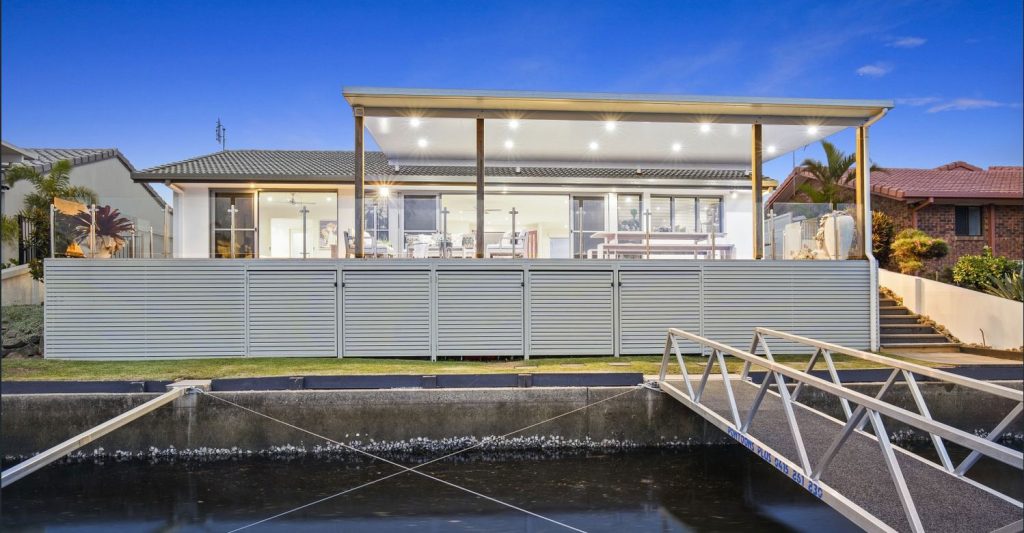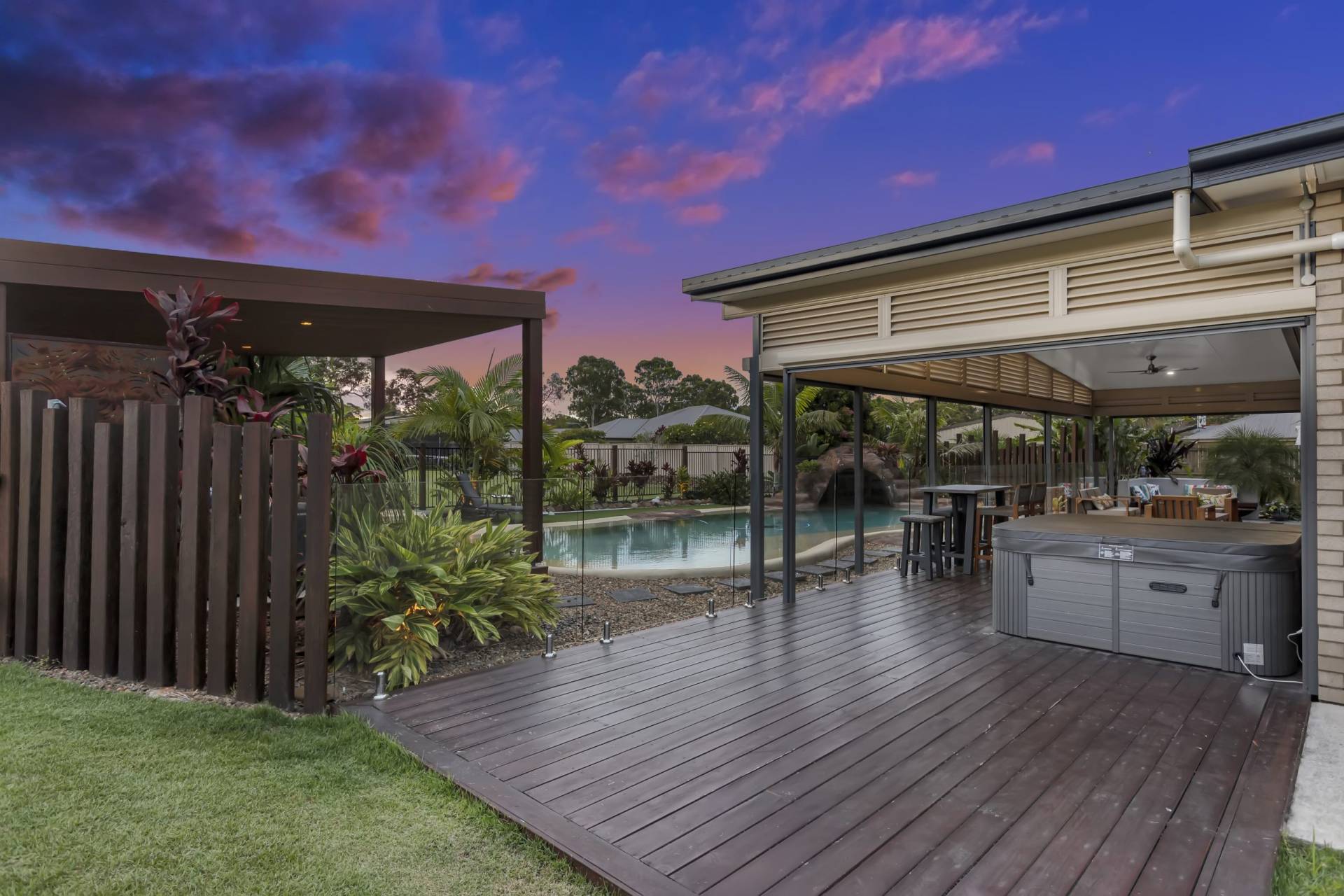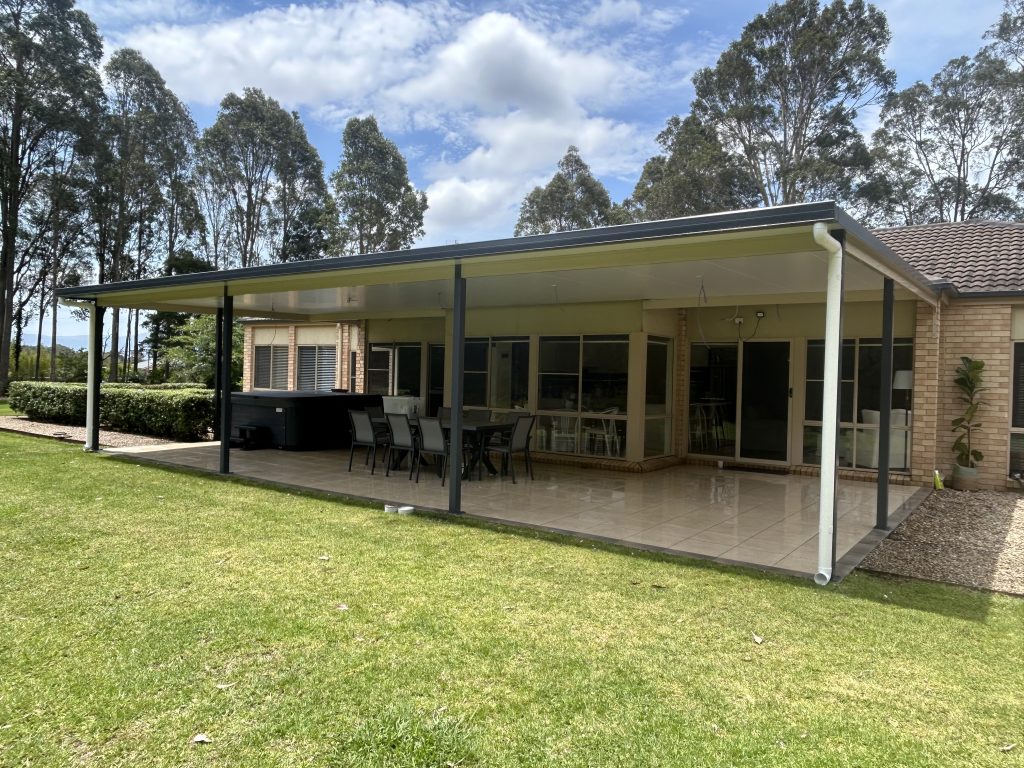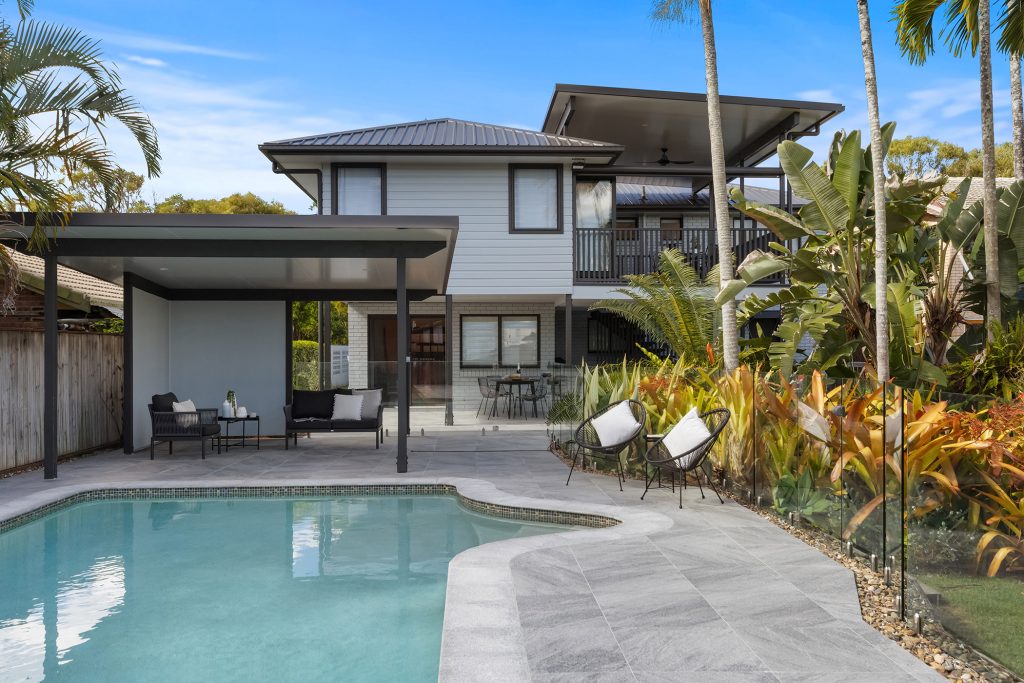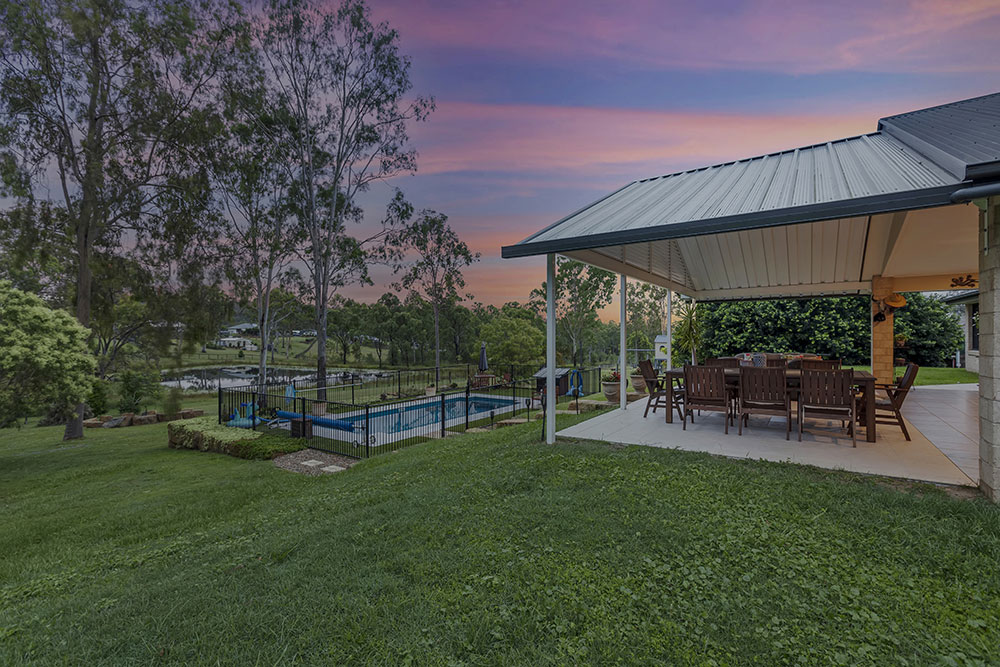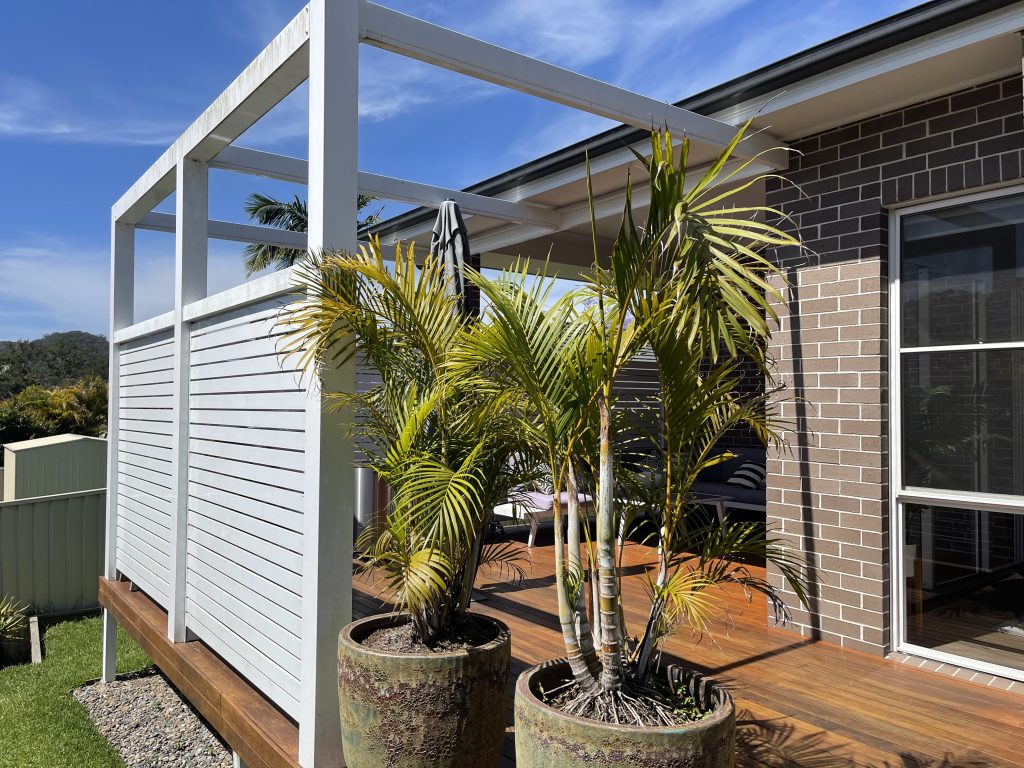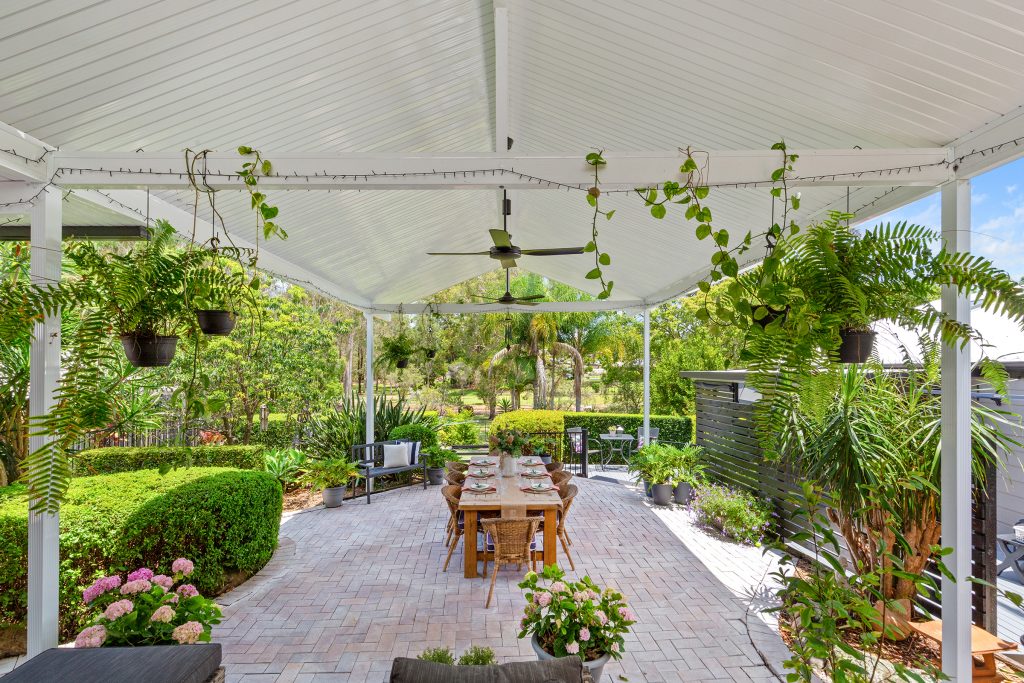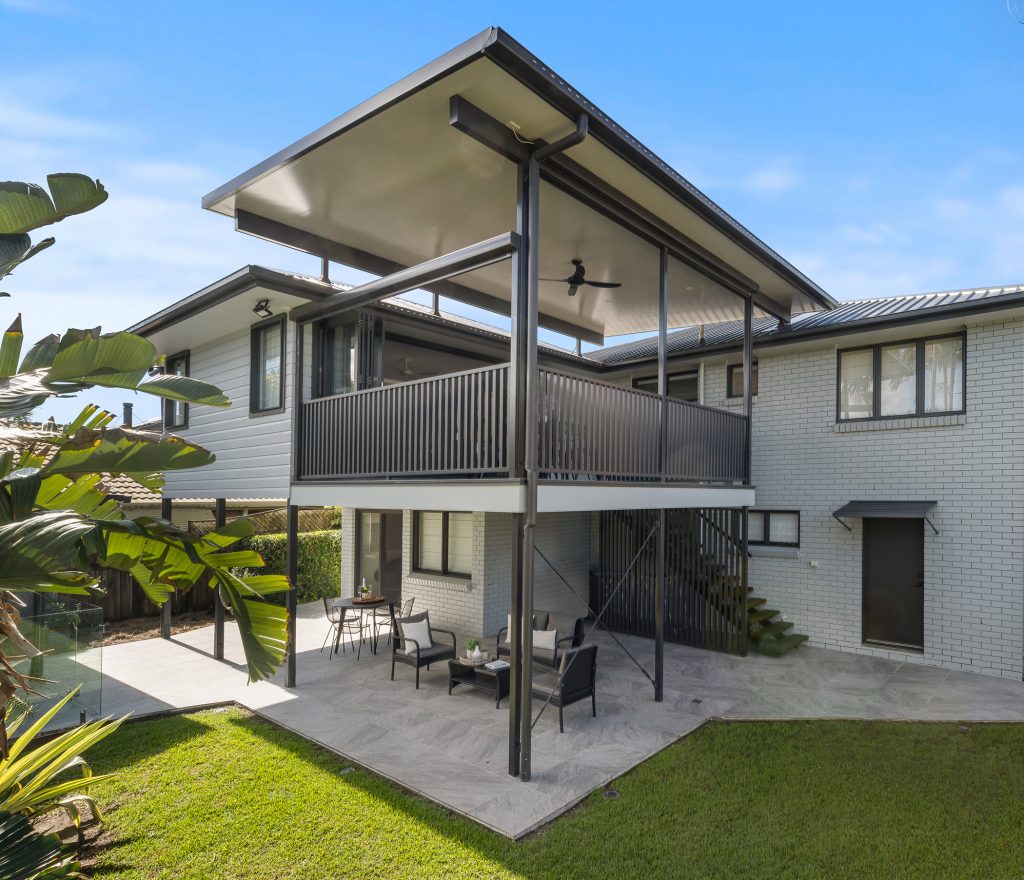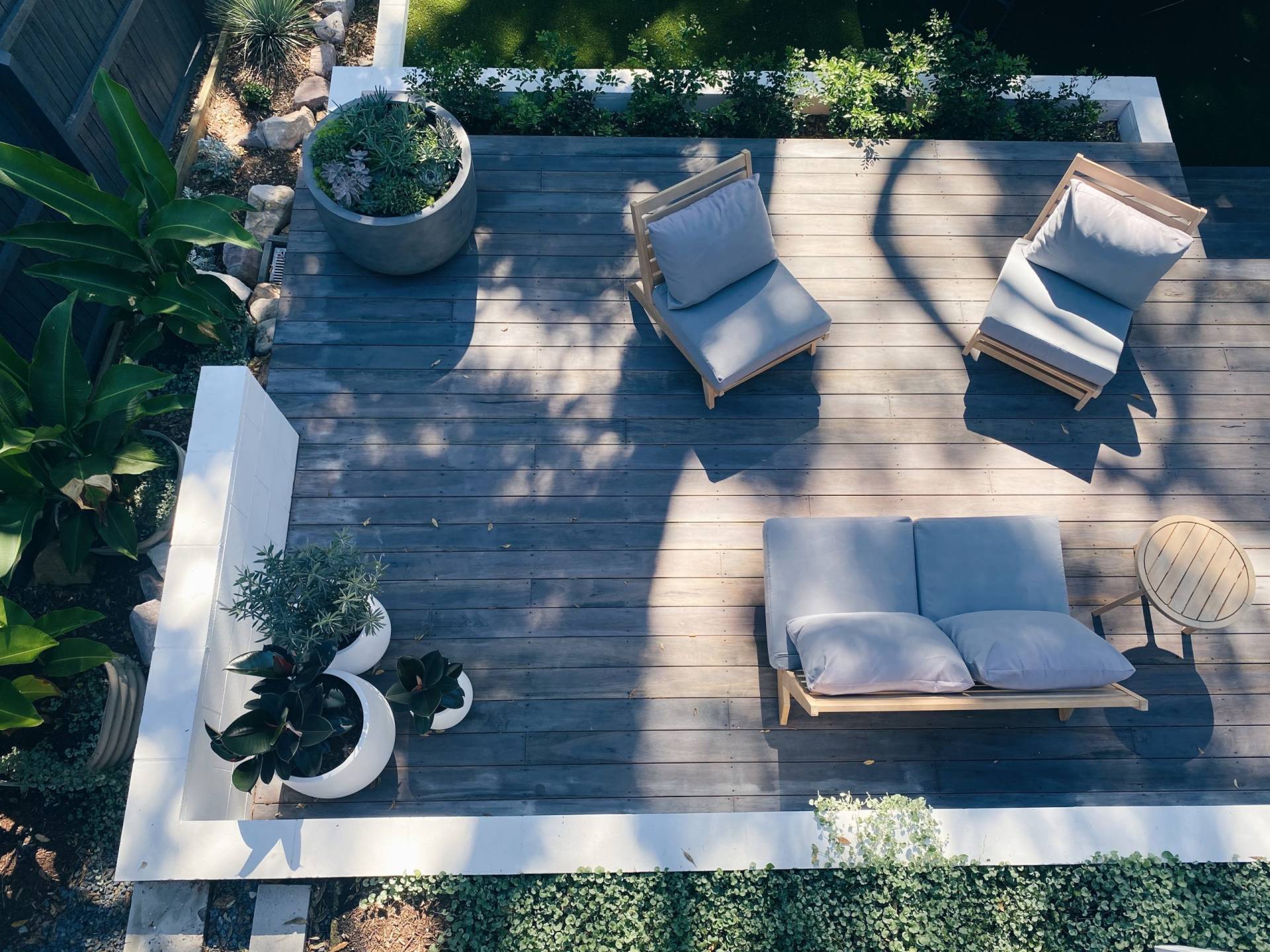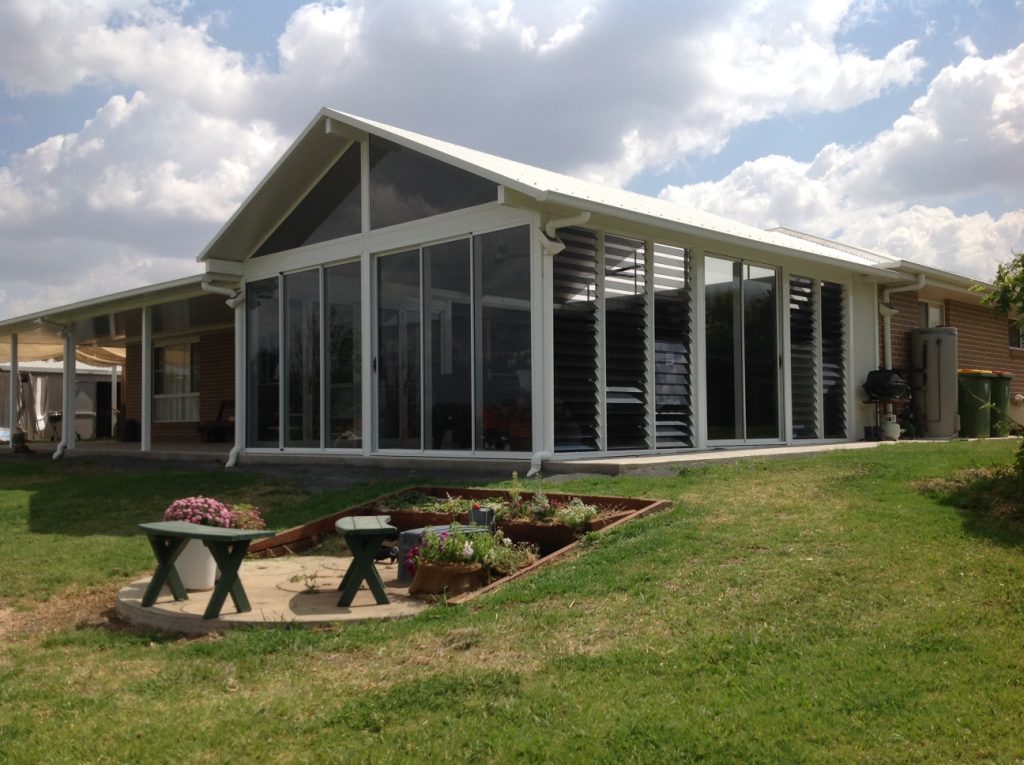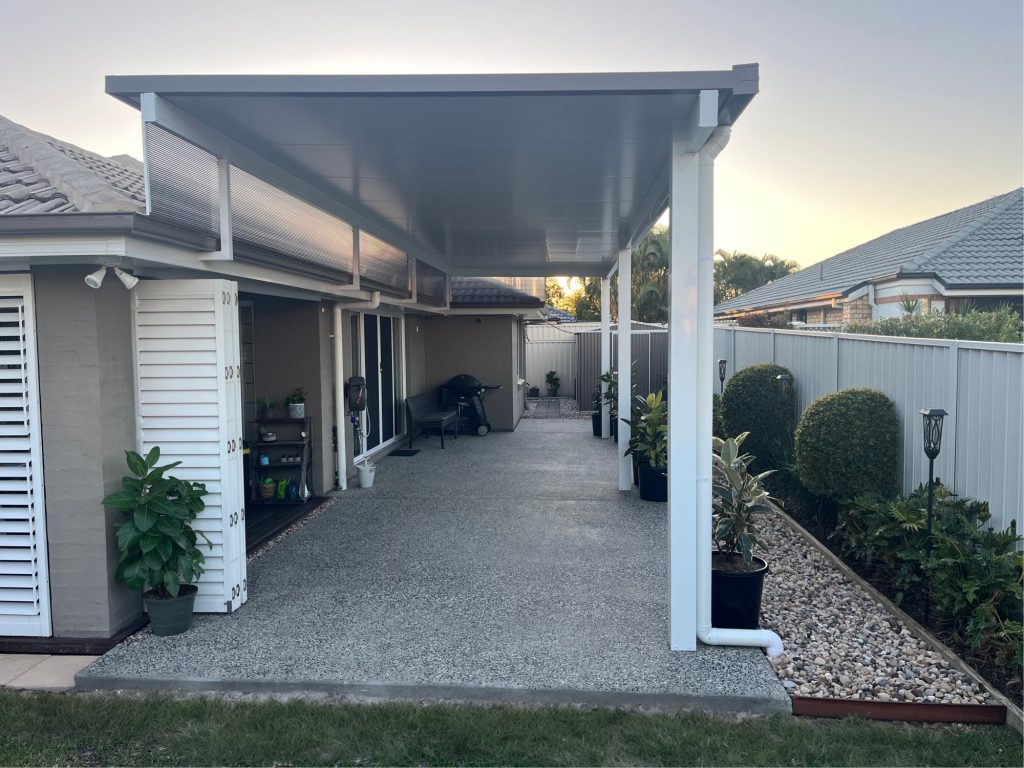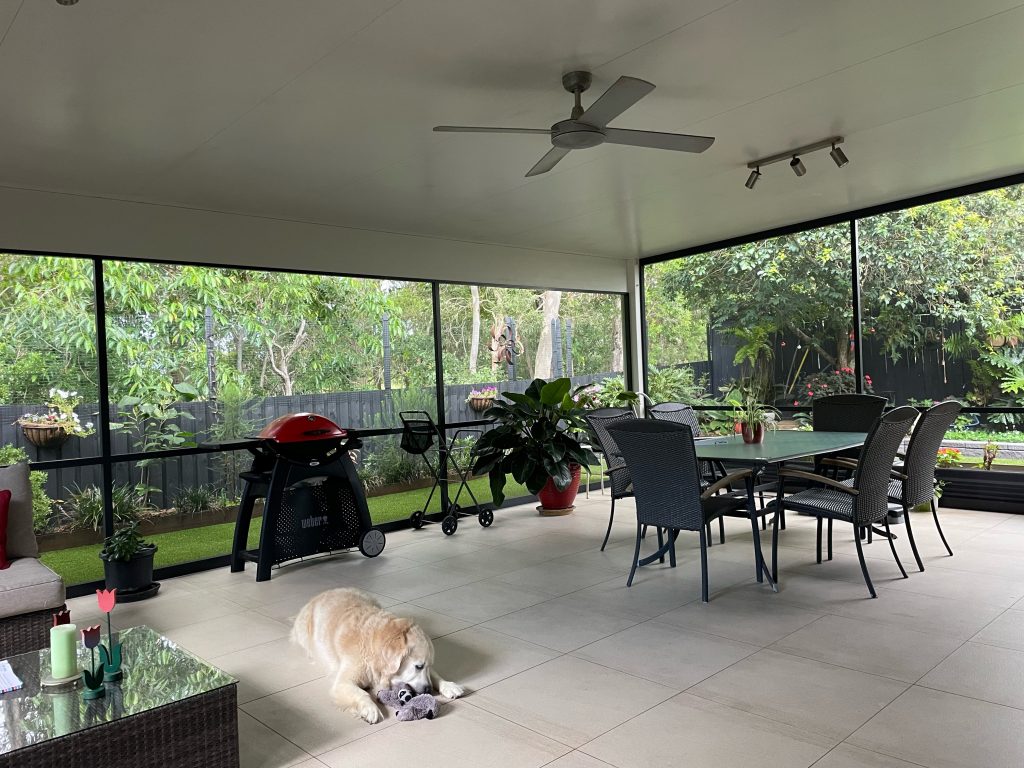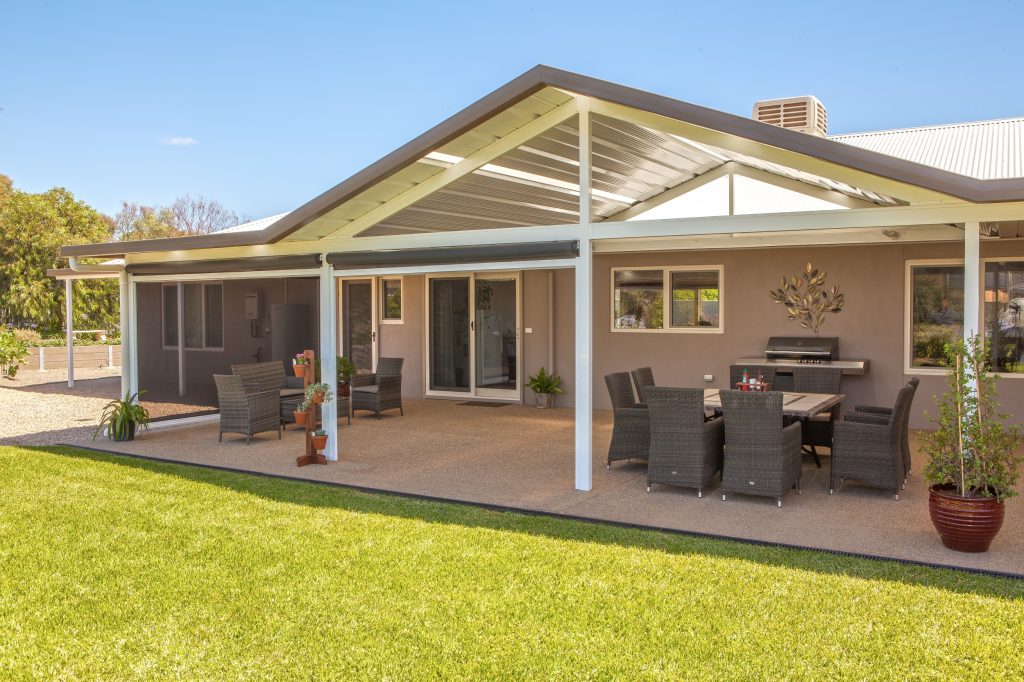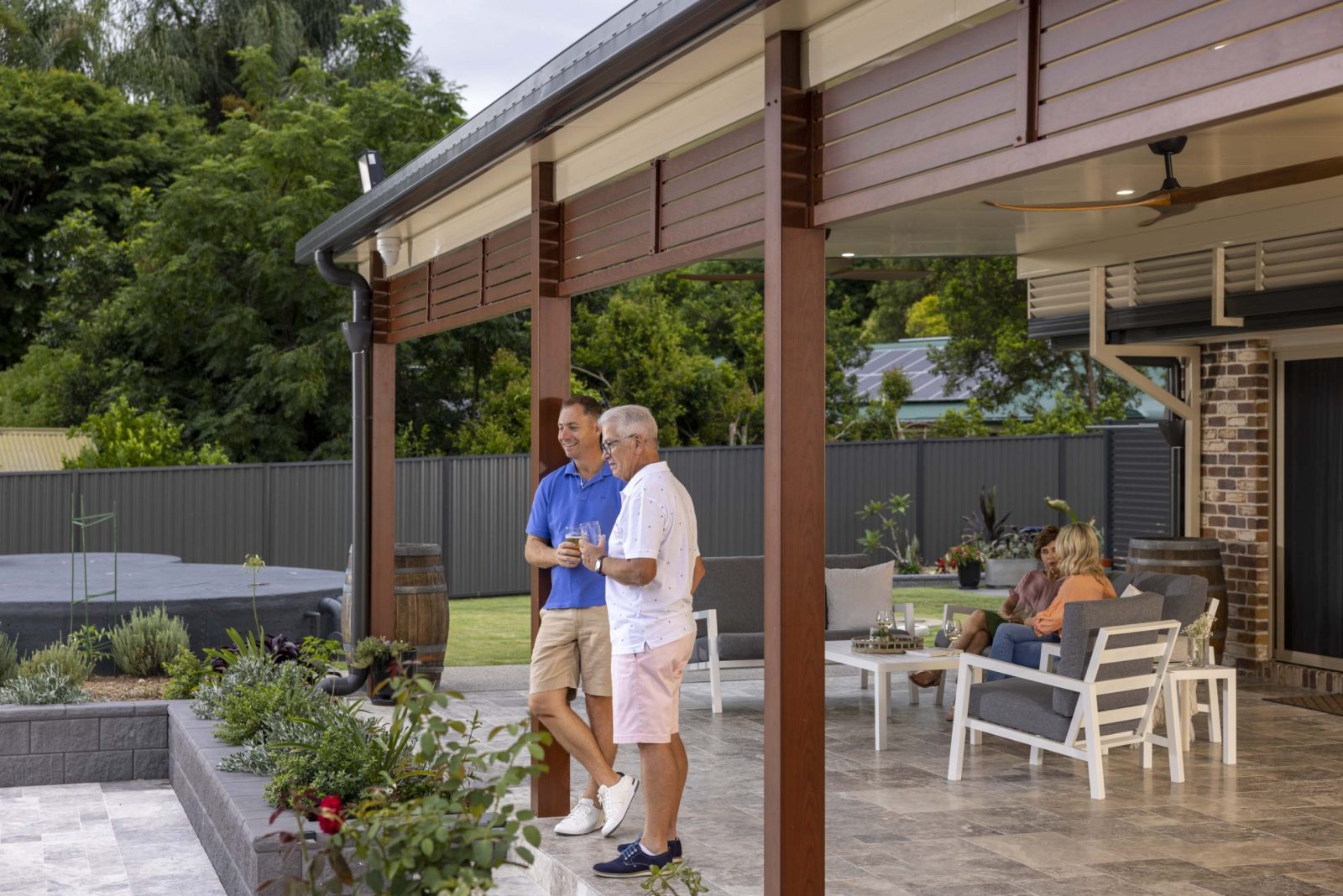Do you want to add a sheltered outdoor space to your home but can’t choose between a pergola and a verandah? Maybe you aren’t sure what the difference is between a pergola and a verandah?
No matter the question, we at Apollo Patios are here to help. Today’s guide walks you through the design and functionality differences between a pergola and a verandah, along with their pros and cons to help you create an outdoor space that works for you and your home.
Let’s dive in and see their differences.
In This Article
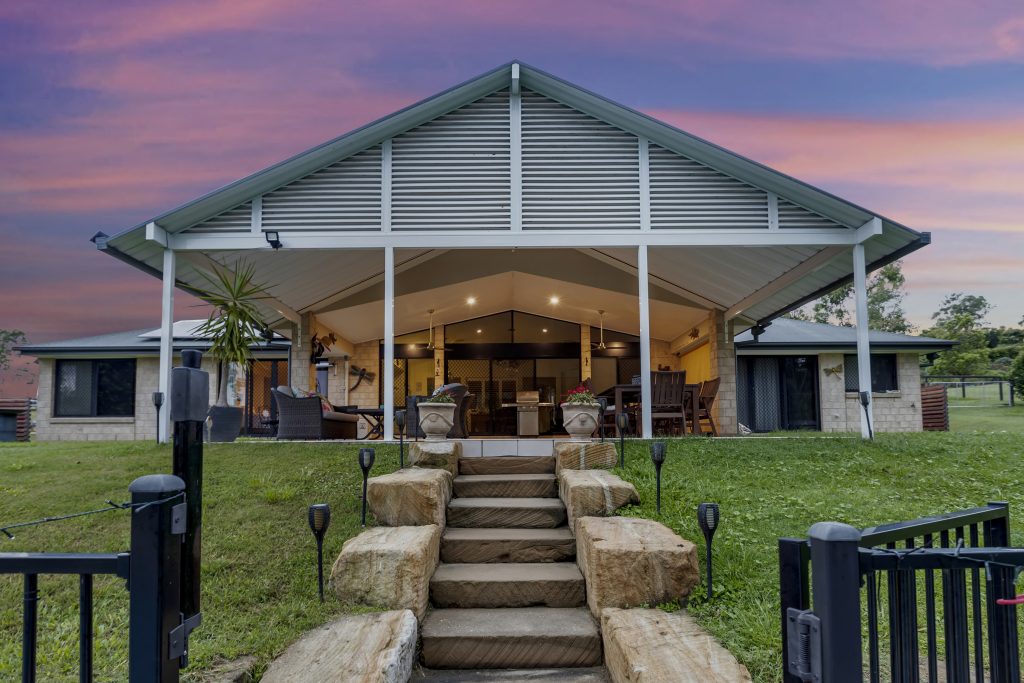
What Are The Design Differences Between A Pergola And A Verandah?
The biggest design difference between a pergola and a verandah is that a pergola can be added to any outdoor space, whereas a verandah must be attached to your home. A pergola can be added anywhere as a freestanding structure, but it can also be attached to your home if you prefer. It’s a great way to transform the space without breaking the bank.
A verandah is attached to your home, often the front, and is used to cover an outdoor area or wrap around your home, covering multiple sides of your home. A verandah can add shade and protection while covering any outdoor living spaces or decks around your home. A pergola typically does not wrap around the house, even when attached to one of your exterior walls.
At Apollo Patios, you can add a variety of roofs to your verandah to create a design that suits you and offers the weather protection you want. A gable roof, curved roof, pitched roof, or flat roof are among the most common. Apollo Patios can also customise a pergola to suit your specifications, whether that be a particular size or style.
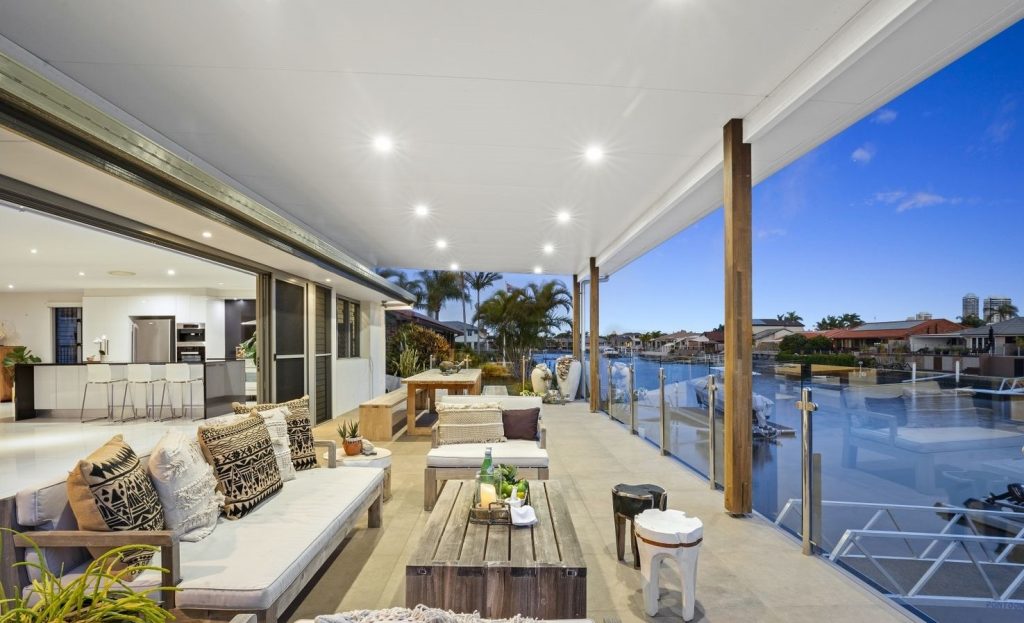
What Are The Functionality Differences Between A Pergola And A Verandah?
A pergola and verandah can be used to expand your living space in your home, but with a pergola, you have more flexibility about where this living space is. In larger gardens, a pergola can add an extra dining area in the middle of your yard, whereas your verandah can only add space immediately next to your home.
A verandah’s functional purpose is to offer more shelter than a pergola. For this reason verandahs are often installed at entrances of your home, to ensure that you are out of the weather upon arrival home. Verandahs provide greater protection from the rain and wind, making a space that is suitable to use as storage, feature planter boxes or even to be used as a relaxation space with some outdoor furniture. Pergolas are designed to make a statement in your garden and offer a versatile space that offers partial shade or privacy, rather than offering complete protection overhead.
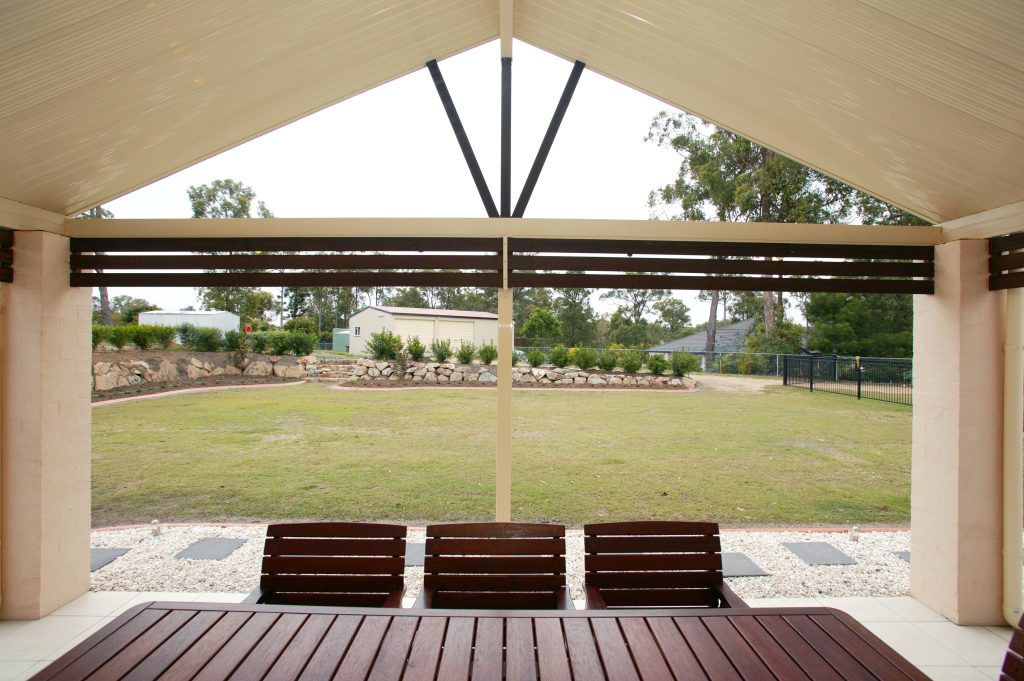
What Are The Maintenance Requirements Of A Pergola And Verandah?
Both a pergola and verandah require regular maintenance throughout the year, but a verandah does require more maintenance, thanks to the inclusion of a roof, gutters and drain pipes.
Maintaining A Pergola
Maintaining a pergola is relatively easy and involves hosing down your pergola to remove any residual dirt, grime or salt crystals as they will compromise your structure. This should be done at least twice a year.
In addition, any vines or climbing plants you have added to your pergola must be trimmed regularly, roughly twice a year for vines unless the specific plants you have used have other maintenance requirements.
Maintaining A Verandah
Verandahs also need regular maintenance. Veranda maintenance mainly involves keeping them clean. As with a pergola, maintaining your verandah is essentially keeping your verandah clean. A regular clean will assist the rain with removing dirt and debris, which could cause problems for your verandah.
Unlike a pergola, your verandah will likely have gutters and drains that need to be routinely checked to ensure they remain unblocked, especially before storms or the wetter seasons. A good guide is to inspect as often as every three months, and clean your gutters and downpipes every six months.
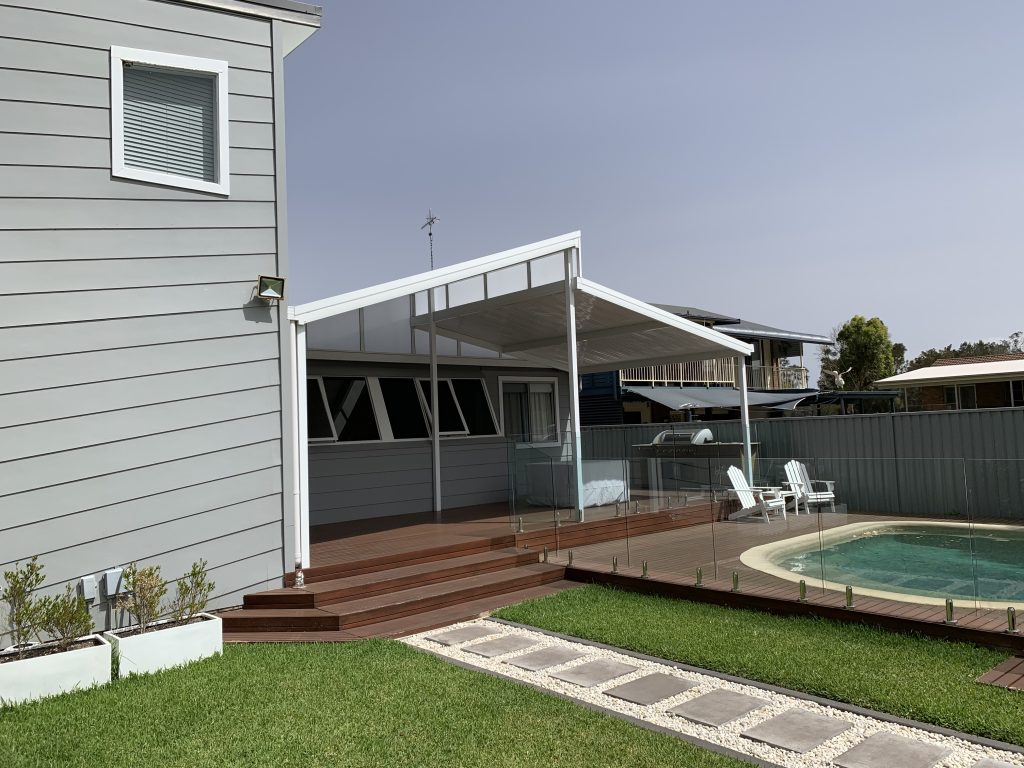
What Are The Benefits Of A Pergola?
There are some benefits to a pergola, listed below for you to check out.
They Extend Your Living Space
A pergola is an easy way to extend your living space without extending your home. A pergola attached to your home will extend your living space, adding an extra outdoor area that you can use when the weather permits.
How you choose to use your pergola space is up to you, but they offer wonderful spaces for entertaining, however keep in mind they do not offer complete protection overhead, if the weather should turn wet. You can use the extended living space to add variety to your garden, too, changing the purpose of the space as often as you like to suit your lifestyle. A unique outdoor atmosphere is easily created with a pergola in your garden!
They Add Privacy
Pergolas are an excellent way to add privacy to your garden. You can also customise how much privacy the structures offer, tailoring them perfectly to your needs. By adding decorative panels or slats you can ensure that your neighbours can’t view your private space, allowing you to relax in your pergola worry-free.
A freestanding pergola offers wonderful privacy, too. You can add a free-standing pergola over your spa to shield prying eyes and ensure you enjoy the hot water and bubbles.
They Offer Outstanding Customisation
You can choose a pergola in any design or size that you want. Apollo Patios offers unbelievable customisation for pergolas, customising everything from the size to the colour and screens used to create a unique pergola that truly suits your home.
The customisation options are a huge benefit, allowing you to add a stylish addition to your garden that can match the design of your home for a cohesive look.
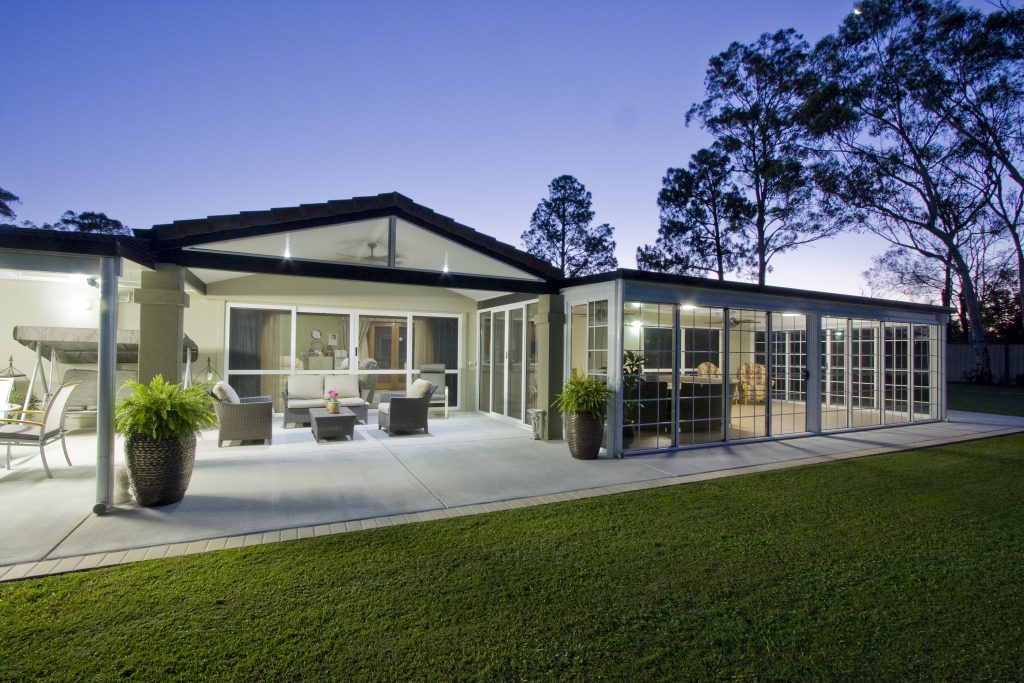
What Are The Drawbacks Of A Pergola?
The main drawbacks of a pergola are listed below.
They Require Frequent Maintenance
Although a pergola will last for years, it does require maintenance and general cleaning every six months or more.
Apollo Patios offer a superior paint coat that boasts (depending on your choice), up to a fifteen-year warranty, so you don’t need to worry about maintaining the appearance of your pergola.
With that said, you will still need to regularly clean your pergola and make sure that any plants or climbing vines are kept in control.
When Should You Buy A Pergola Over A Verandah?
You should purchase a pergola over a veranda when you want an outdoor living space not connected to your home or where you’d like the space to be almost completely open to the elements. A pergola is your better option if you want to have your own distinct area that isn’t enclosed.
You can read more about building a custom-designed pergola with Apollo Patios if a customised pergola seems like the right choice for you.
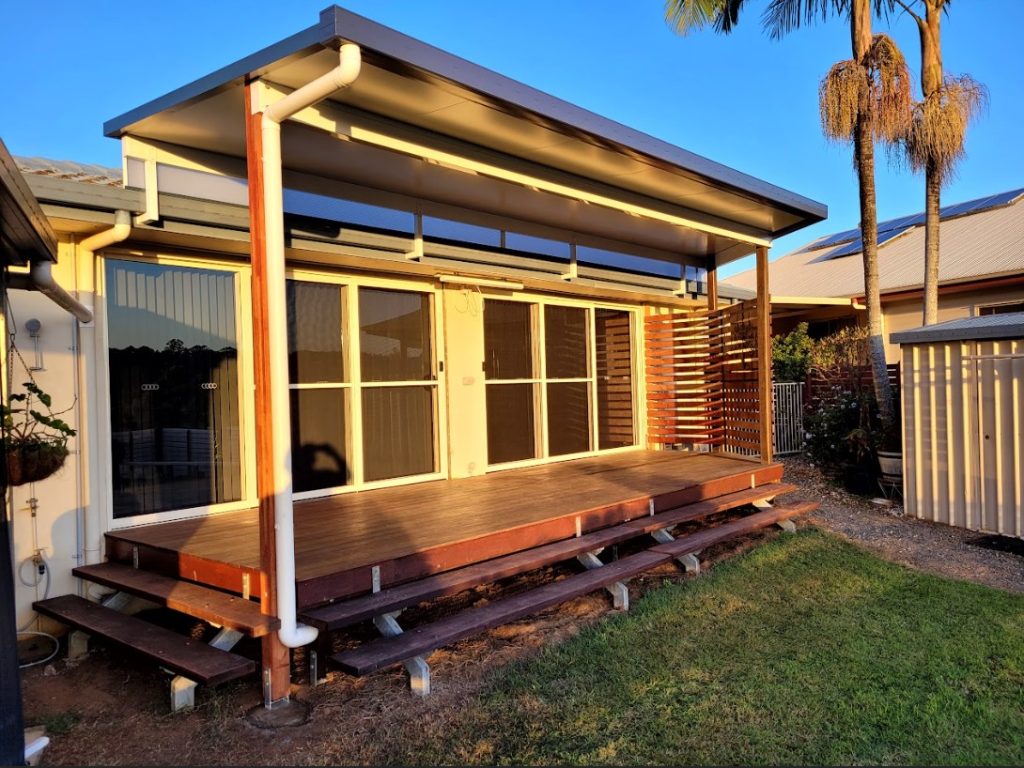
What Are The Benefits Of A Verandah?
Verandahs have a few benefits, which are outlined below for you.
They Offer Weather Protection
Verandahs will provide shade from the sun and protection from wind and rain during the winter, allowing you to use your outdoor space year-round. Weather protection means you don’t need to factor in the weather when planning to use your outdoor space, increasing its usability. You can entertain outdoors come rain or shine, allowing alfresco dining whenever you want.
The roof of a verandah also offers protection from the sun’s heat, allowing you to use the space without worrying about overheating.
They Can Be Sustainable
Verandahs can be a sustainable option, too. Not only does your verandah protect you from the hot sun or wind, but your home, too. The verandah prevents hot sun rays from entering your home, reducing how often you need to use your air conditioning in the summer to keep your home cool. This can save you money in the long term and reduce your carbon footprint.
They Add Value To Your Home
A stylish verandah installed correctly can add value to your home, allowing you to sell the property for more money should you choose to sell. A veranda can also attract more potential buyers, as it can make the entrance to your home feel grand and cleverly designed. Plus, if a verandah is already installed, it is one less task for potential buyers when they move into the property.
You can blend indoor and outdoor space with a verandah, and use your verandah as a modern mud room and with many design options, you will surely find one that you love and will add value to your home.
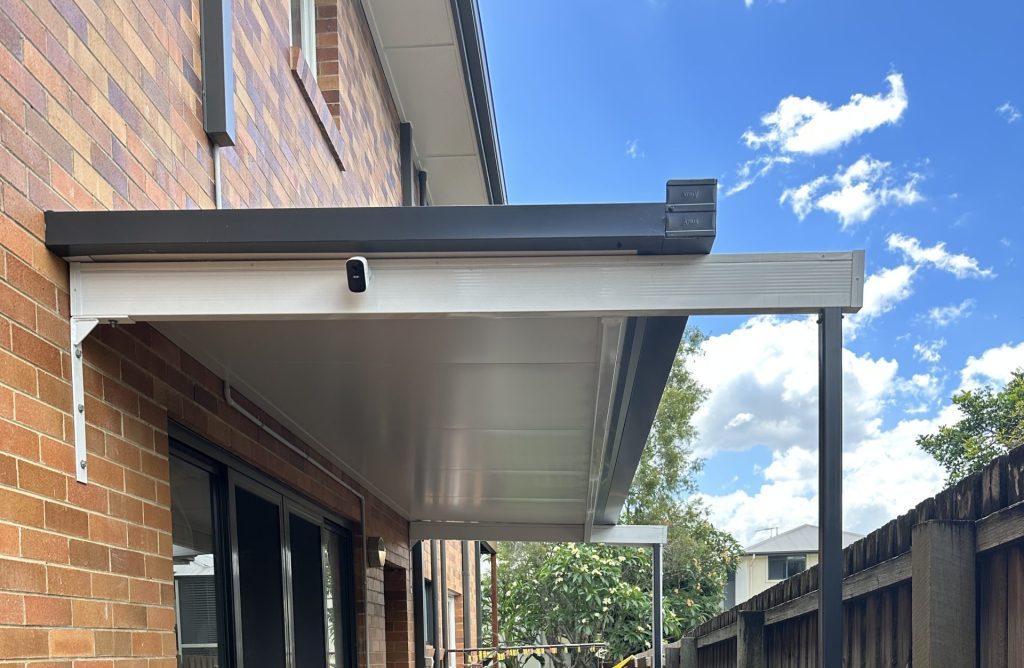
What Are The Drawbacks Of A Verandah?
The drawbacks of a verandah are outlined below for you.
They Require Regular Maintenance
Verandahs require regular maintenance, which can be time-consuming for some families. Like a pergola, your verandah needs to be cleaned regularly with the addition of needing to check that the roof is clean and gutters are clear.
Verandahs from Apollo Patios are designed with weather-proof, high-quality materials but some maintenance is still involved. If you don’t want to spend time cleaning your roof and gutters you could opt to have them professionally cleaned. Failing to clean your verandah guttering regularly can lead to blocked and overflowing gutters, which can cause water to possibly pool in places.
They Can Be Cold To Use In The Winter
A verandah without heating can be too cold to use during the winter months, reducing how often you can use the veranda. The cold might not be an issue depending on where you live in Australia, but it is worth considering.
Adding heating to your verandah is an option, but would require you to have electricity on your porch or deck.
When Should You Buy A Verandah Over A Pergola?
A verandah should be purchased to add a sheltered space to your home. Attached to your exterior walls, a verandah provides shelter and an extended outdoor space that can suit many homes and enhance your outdoor living appeal. Should you want to offer shelter on multiple sides of your home, a wrap-around verandah is the ideal option, with customised designs available.
A veranda is ideal if you want to keep your interior rooms cool and leave screen doors open for the breeze. You can read more about a custom-designed verandah with Apollo Patios and see the diverse range on offer, should the veranda be the right choice for you.
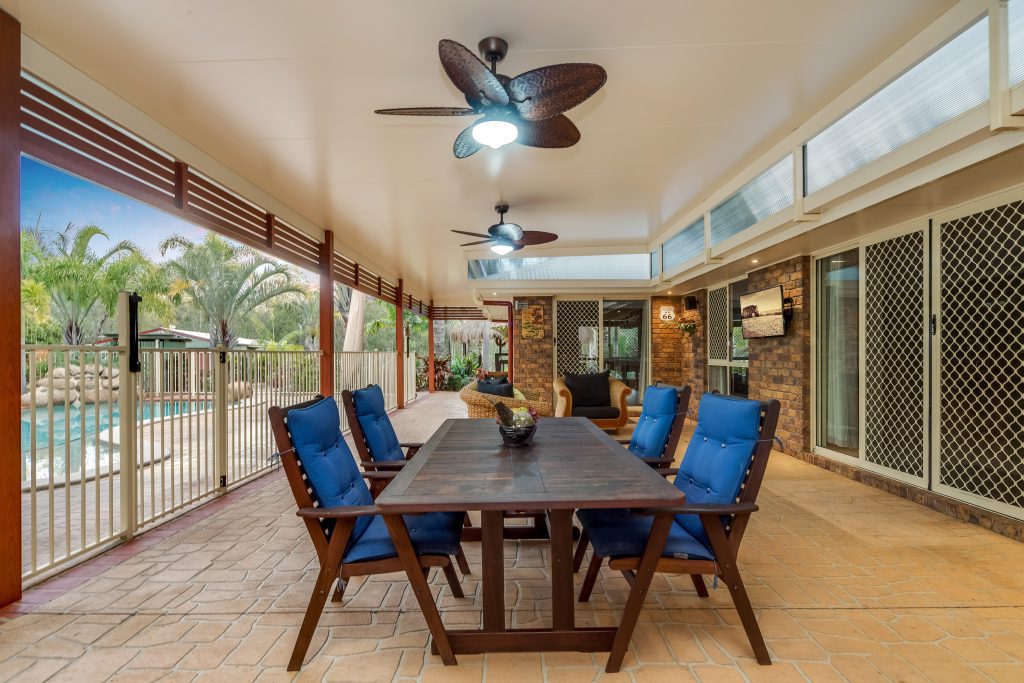
Create A Custom Designed Pergola Or Verandah With Apollo Patios
Whether you want to create a unique outdoor area in your garden, extend your living space, or add weather protection to your home. Now that you know the differences between a pergola or verandah, we hope that this has been useful in helping you decide which would be the perfect option for your home.
Why not create a custom pergola or verandah with the help of Apollo Patios? Our custom designs, impressive range, and personalised service will give you years of happy use and a new lease of life to your garden.
